#i need to read more non western contemporary
Note
So what’s the modern interpretation of the laws about keeping slaves? I’ve heard that said laws where a lot more kind to slaves then the surrounding nations but, like, it’s still slavery?
Hi anon,
With Pesach coming up, I'm sure that this question is on a lot of people's minds. It's a good question and many rabbanim throughout history have attempted to tackle it. Especially today, with slavery being seen as a moral anathema in most societies (obviously this despite the fact that unfortunately slavery is still a very real human rights crisis all over the world), addressing the parts of the Torah that on the surface seem to condone it becomes a moral imperative.
It's worth noting that the Jewish world overall condemns slavery. In my research for this question, I came across zero modern sources arguing that slavery is totally fine. I'm sure that if you dug deep enough there's some fringe wacko somewhere arguing this, but every group has its batshit fringe.
Here are some sources across the political and religious observance spectrum that explain it better than I could:
Chabad (this article is written by Rabbi Tzvi Freeman, a wonderful rabbi whose words I have learned deeply over the years. He is one of my favorite rabbis despite not seeing eye to eye with a lot of the Chabad movement)
Conservative (to be clear: this is my movement; it's not actually politically conservative in most shuls, just poorly named. We desperately need to bully them into calling themselves Masorti Olami like the rest of the world. It's [essentially] a liberal traditional egalitarian movement.)
Conservative pt. 2 (different rabbi's take)
Reform (note that this is from the Haberman Institute, which was founded by a Reform rabbi. Link is to a YouTube recording of a recent lecture on the topic.)
Chareidi (this rabbi is an official rabbi of the Western Wall in Israel, so in a word, very frum)
Modern Orthodox
I want to highlight this last one, because it is written by the Rosh Yeshiva of Yeshivat Chovevei, which is a progressive Modern Orthodox rabbinical school. They work very hard to read Torah through an authentically Orthodox lens while also maintaining deeply humanist values. As someone who walks a similar (if not identical) balancing act, this particular drash (sermon) spoke very deeply to me, and so I'm reposting it in its entirety**
[Edit: tumblr.hell seems real intent on not letting me do this in my original answer, so I will repost it in the reblogs. Please reblog that version if you're going to. Thanks!]
Something you will probably notice as you work your way through these sources, you'll note that there are substantially more traditional leaning responses. This is because of a major divide in how the different movements view Torah, especially as it pertains to changing ethics over time and modernity. I'm oversimplifying for space, but the differences are as follows:
The liberal movements (Reform, Renewal, Reconstructionist, etc.) view halacha as non-binding and the Torah as a human document that is, nevertheless, a sacred document. I've seen it described as the spiritual diary of our people throughout history. Others view it as divinely inspired, but still essentially and indelibly human.
The Orthodox and other traditional movements view halacha as binding and Torah as the direct word of G-d given to the Jewish people through Moshe Rabbeinu (Moses) on Mt. Sinai. (Or, at a minimum, as a divinely inspired text written and compiled by people that still represents the word of G-d. This latter view is mostly limited to the Conservative and Modern Orthodox movements.)
Because of these differences, the liberal movements are able to address most of these problematic passages by situating them in their proper historical context. It is only the Orthodox and traditional movements that must fully reckon with the texts as they are, and seek to understand how they speak to us in a contemporary context.
As for me? I'm part of a narrow band of traditional egalitarian progressive Jews that really ride that line between viewing halacha as binding and the Torah as divinely given, despite recognizing the human component of its authorship - more a partnership in its creation than either fully human invention or divine fiat. That said, I am personally less interested in who wrote it literally speaking and much more interested in the question of: How can we read Torah using the divinely given process of traditional Torah scholarship while applying deeply humanist values?
Yeshivat Chovevei does a really excellent job of approaching Torah scholarship this way, as does Hadar. Therefore, I'm not surprised that this article captures something I have struggled to articulate: an authentically orthodox argument for change.
93 notes
·
View notes
Note
kinda random question but how do you go about researching? I’ve wanted to get deeper into fashion history than just watching youtube videos, but I don’t really know where to start.
ps. thanks for making such detailed posts. they’re really interesting to read.
Thank you! I'm really glad you've found my posts interesting!
This is great since I've kinda answered this in replies couple of times, but not properly. I very much understand the struggle. Dress history is a relatively new academic field and there's not that much reliable sources available and so so much unreliable sources everywhere. Internet of course has this problem but so does a lot of books too.
I thought this would be a short one and yet, here we are again.
Disclaimer: I'm writing this from a western fashion history perspective, since that's what I know best, but especially reading up on academic research and doing primary source research applies to non-western cultures too, though often it's harder to find sources for non-western fashion.
Getting started
Imo the best place to getting started is to read a book that gives a general timeline of fashion through history. I'm not sure if that's just how my brain works, but it helped me a lot of when going deeper into one period or another to understand the broader context and what roughly came before and what after. However these books are inherently difficult to make well, because there's so much nuance and variation in every period of dress history and if you're writing about the whole timeline through thousands of years and keeping it book length, there will need to be a lot of simplification to the point of inaccuracy. There's many popular fashion history timeline books with illustrations made for the book, but I would avoid those since non-contemporary illustrations often give a distorted image of the fashion, especially when it's about earlier periods in history. I've seen some really inaccurate illustrations depicting Middle Ages and Renaissance especially.
Costume and fashion: a concise history by James Laver - I'd recommend this as the starting point. James Laver was a art historian, an important pioneer of fashion history and curator of Victoria and Albert Museum, which has one of the most extensive costume collections now. The book is therefore based on serious academic study, but being a pioneer means you'll be outdated, when the field is more established, which is partly the case with this book. There's some outdated parts, but the images are primary sources and it does give good historical background. It should be taken as a starting point, not as the end point.
A History of Fashion by J. Anderson Black and Madge Garland - This is another similar book. It's more recent, but it also suffers from some outdated parts. The writers are not academics, but it has more primary source pictures which does help (at least me) understand visually what's being said.
Books
In a given subject I'm researching I usually start with seeing if I can find a reliable book on it or related to it, if I haven't already read much on it. Often what I want to research goes deeper into details than what a book usually does, so it will work as a starting point. As said it can be hard to find these books that are actually reliable, but here's couple of reading lists to help with it.
Here's a reading list by a retired professor of dress history from Helsinki University. It's very extensive and has a wide variety of books and papers listed. There's a bit of leaning towards Finnish sources, but most are in English and about more international western fashion.
Here's a reading list by @clove-pinks, who is excellent and writes a lot about the Romantic period, especially men's fashion here on Tumblr. These are all books that can be read free on Internet Archive, which makes the list even better.
Internet sources
There's a lot of bad sources floating around in the internet, but also some excellent gems. As dress history is such a new field, there's a lot of unexplored spots and lacking research still, but some troopers in the internet have done some great legwork in going through primary sources and gathering them together. These can be excellent especially when trying to research a specific garment, since often these blog posts are by historical costumers, who are detailing their background research in reconstructing a specific garment. It's not always easy to find them, since they might not come up in the first page of the google search, but I often find them through pinterest, where the blogs are linked into the primary source images and images of the reconstructed garments. Though be sure to look with blogs like that with critical eye. The best sign that it's reliable is when each image is given a source.
There's some more general sources too that need to be taken with a grain of salt.
Fashion History Timeline - This is a page with entries to the whole timeline of fashion as well as entries of specific garments. It's very well sourced and has usually pretty good image sources too. I will say though that it often gives a pretty limited description of the period focusing on some specifics, without giving a good overall picture, especially in the Medieval sections. The medieval sections are honestly pretty useless. It's at it's best in 19th century imo (I haven't checked out the entries to 20th century since I rarely research vintage styles, but I'd assume they are pretty good too). But since it has great sourcing it is usually informative. It just shouldn't be relied upon to give full picture of a period.
Wikipedia, History of Western fashion - In some ways this is the opposite of Fashion History Timeline. Wikipedia has articles on each period. The sourcing on these articles is often quite lacking and the information shouldn't be taken at face value. Especially the terms for the garments are often used in these articles in very questionable ways. However what these articles have is pretty good primary source image collections, and what is nice is that in Medieval, Renaissance and Early Modern periods they are often divided into regions, and they often have images of working class clothing, which are for some periods really hard to find. These articles often don't either give a full picture of the period, but in someways the basic picture of the period is easier to grasp from these than from Fashion History Timeline. I use these mostly for the primary source images, and the texts of them should be taken with a bucket of salt.
Academic papers
Going deeper into something will inevitably require reading up on some academic papers. I'm lucky since I get access to a lot of academic publications through my uni, but JSTOR (my beloved) gives free access to 100 papers per month (you'll just have to make an account). Through google scholar you can search for papers on a given subject, or if you don't have access to other publications, you can just use JSTOR's search engine.
Primary sources
If some MVP hasn't already combed through primary sources to gather them on a give subject, you can do that too. It's not necessarily an easy task though. There's thankfully a perfect guide for that.
A Handbook of Costume by Janet Arnold - Janet Arnold was a legendary dress historian, who really defined the modern field. This book details the process of researching dress history and how to analyze primary sources. And it's free on Internet Archives.
I'll give some basics here though.
Extant garment
Most of us who are not academic historians don't have physical access to extant garment, but many museums have nowadays excellent digital archives of their costume collections. Here's a list of the most well known ones. MET and V&A has sometimes great descriptions of the clothing and their history, but not for every item.
MET Costume Institute
Kyoto Costume Institute
LACMA
V&A Costume Collection
Palais Galliera
Extant garments are of course the ideal sources to study, since they are the actual garments and not just representations or descriptions of them. Sometimes the collections even have pictures of the insides of the garments, giving invaluable information about their construction. However, extant garments have limitations for research, since there's a strong survivorship bias. Firstly, they heavily lean on later periods as textiles deteriorate relatively quickly. You won't find extant garments from Middle Ages, at most fragments of them. Secondly, they are mostly clothing of the upper classes. Lower classes used their clothing till they broke down, and even then often salvaged any fabric that could be salvaged for new clothing and other textiles. Upper classes didn't necessarily have to do that, so what survives is usually very expensive formal clothing that people would wear rarely and rather preserve than salvage the fabric from it.
Photography
Since camera was popularized in early Victorian era, you don't get photos before that. Photography is a great source from the times it was available, since yes it's still only representation of the clothing, but there's less artistic interpretation than in paintings and illustrations, though importantly, there still is artistic interpretation. As long as there has been photography, there has been photoediting. They of course used it for creepypasta purposes by editing them holding their own heads and editing ghosts into backgrounds, but also editing their waists smaller. Basically the exact same way photos are still edited. So no, this is not really how small the waist got in Edwardian era, since this is edited.
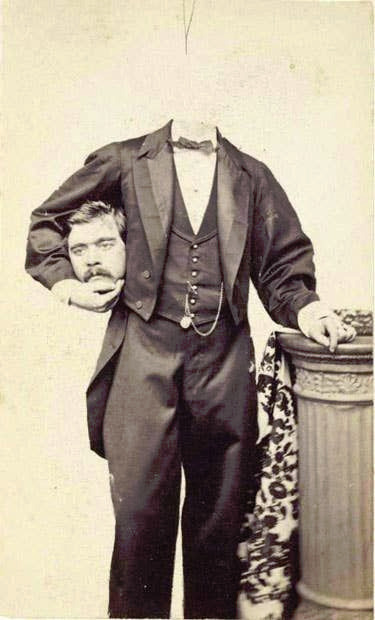
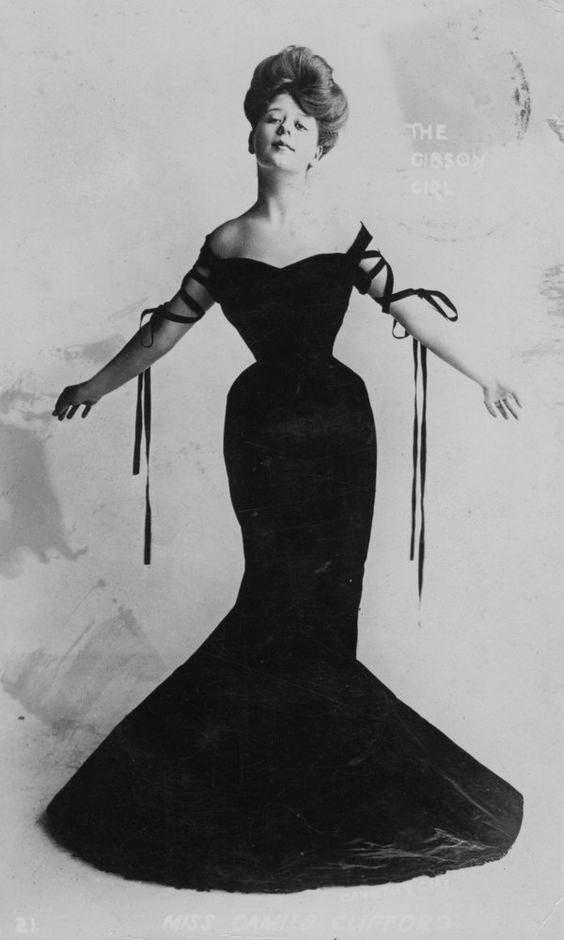
Another obvious limitation for early photography is that it didn't have colors, so popular colors of a given time period and given styles have to be found through other means. A great thing about photography though was that compared to painting, it was relatively cheap, and therefore a lot of lower class people were able to photograph themselves. We even get people outside in everyday situations not posing.
Photography can be found with search engines like google and pinterest, though they should be always sourced then. You sometimes come across very Victorian looking photos that are actually just modern photos that are well edited. And also it's important to date the photos, which might not be easily with photos just randomly floating in the internet. Libraries and museums sometimes have good digital collections of old photos. For example:
Digital collections of New York Public Library (NYPL) - It has a wide variety of collections including photography, fashion plates and other illustrations. I haven't found a great way to search through the collections, but the best way I've come up with is to search images within the Clothing & Dress topic, put some limiting filters, then click some right looking image and then go to the collection it was from. I bet there's an easier way but I haven't figured it out.
Paintings
A great thing about paintings and statues is that they date basically through whole history of organized civilizations. Paintings are more delicate so even with murals in antiquity, you'll get more surviving status from that time period. But because of the strong artistic interpretation inherent to these art forms, there's some tricky parts to them as sources for historical fashions.
You'll find a lot of paintings by just searching for fashion or paintings of a given period in google and pinterest, but it's sometimes tricky to source them to figure out where and when they were painted. Therefore I often check from Wikipedia a list of artists from a given time and place, and search their paintings from digital archives of museums. It also helps when you choose artists who were specialised in specific type of paintings. What kind of paintings depends on what you're researching and the time period.
Portraits are of course great sources. They depict the actual clothing an actual person wore and if the person was historically important enough you can find out who they were and gain a lot of context for the clothing. However, they are usually all rich people, though not always. Another thing to keep in mind is that sometimes portraits portray the subject in a costume. This became a pretty big trend among nobles in 18th century. They had costume parties and would have their portrait painted with their costume, but also there were trends of costume that were not even worn for parties, but only for having a portrait. Sometimes the painting would be painted like a scene and not like traditional portrait. Van Dyke costume (first picture below) in first half of 18th century paintings is one such example. It referred to mid 17th century fashion that was seen as timeless at the time. Peasant costume (second picture below) is another example of a popular costume for nobles to wear in portraits. Costume balls continued to 19th century, but after the popularization of camera they were mainly photographed. People would continue to dress up in costumes for portraits, but it wasn't as big of a trend as in 18th century.
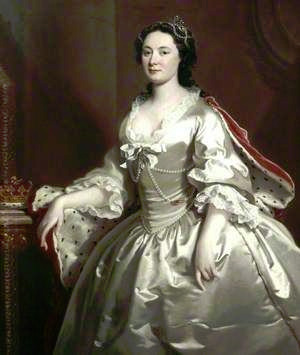

Genre paintings were a genre of paintings that became popular first in 16th century Low Countries and then In Netherlands/Belgium area during the Dutch Golden Age (from late 16th century and thorough Baroque) and during Baroque's popularity all over Europe. Genre paintings depict normal everyday life of peasants, working class people and the bourgeois. During Baroque they often had elements of idealization, symbolism and even sexualization of the subjects, so they should be taken with a grain of salt, but they do usually depict accurately the clothes the people wore. Rococo era had a lot of these types of everyday scenes about the upper class. During the Romantic era peasants were heavily romanticized in genre paintings, but there was also a lot of genre paintings of bourgeois thorough 19th century that was wasn't as strongly romanticized. These scenes were sometimes also depicted in portrait form. Realism brought another interest into the genre and Realistic genre paintings often focused on the working class. They did the opposite of romanticism though and often exaggerated their subjects to look more wretched.
History paintings depict events and scenes that were for the time historical too. They became very popular in 19th century, when Historism was the dominant in arts, but they have existed long before. There's even some from late Medieval period, and in those earlier history paintings, the historical figures are usually depicted in contemporary clothing and there's no attempt at recreating historical styles. In later periods, especially during 19th century Historism they very much tried to recreate historical styles. This is why it's important to always source paintings. I've too often seen Victorian paintings used as images for Medieval fashions.
Religious paintings have sometimes a bit of the same issue. They were very popular during Medieval and Renaissance eras, and usually the biblical figures would be depicted in contemporary fashions, though not always, sometimes in vaguely "biblical garbs". Religious paintings also have the issue of often being highly symbolic, so sometimes the characters in them are not dressed for the situation, or a character that in the biblical canon very poor is depicted in upper class contemporary fashions.
Illuminated manuscripts
Medieval manuscripts with illustrations are invaluable sources for Medieval fashions. They are usually commissioned by royalty and detail historical narratives, so they mostly depict royalty and nobility, but some illustrated scenes depict commoners too. You often find images of the illustrations floating around in pinterest but they can be hard to source when the source is not linked (which is quite often). The illustrations can be spotted by the quite consistent style (though sometimes they are not from illuminated manuscripts but some other rarer illustrations like playing cards).
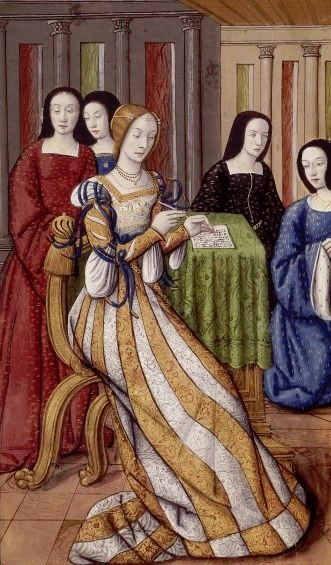

A lot of illuminated manuscripts have been digitized and British and French libraries have quite extensive online collections of them which are linked below. The manuscrips in those are mostly English and French of course but there's manuscrips from other places in Europe too, I've seen quite a lot of the German speaking area especially.
The Bibliothèque nationale de France (BnF)
The British Library
Fashion plates
Fashion plates became a thing in 1780s, so they are not useful for periods before that. They are basically illustrations that show the latest trends and they were published in fashion magazines. They don't reflect the way everyone dressed, since as they did show the latest high fashion and the people who would be wearing that were mostly young rich fashionable people. However, fashion at the time had a little different meaning than today as it was linked to dress code, and to be respectable you needed to follow fashion. So everyone, even working class people, would follow the new trends to an extent. This is especially true when we get to Victorian era, when mass industrial mass production and the emerging middle class made clothing cheaper and more available to more people. They wouldn't maybe follow every new trend or with every detail and with as much extravaganza or with the most expensive fashionable materials.
While the fashion plates didn't necessarily depict specific existing clothing, they were based on existing clothing and they were often used as guides for dressmakers. Kinda like you might go to a hairdresser with a picture of a famous person's hair or hairdressers sometimes use pictures of famous person's hair to show what they might do. And the people who might not afford something as extravagant as shown in a fashion plate, might still show it as a guide and get a simpler version of it made for them. People of the middle and lower classes especially would also use them as guides to sew themselves fashionable clothing.
Fashion plates are quite easily found on the internet, but as with other things, if you don't go straight to some organized archive, it might be really hard to date them accurately. Many bigger museums and libraries have fashion plates in their online archives, for example NYPL which I mentioned earlier.
MET Fashion Plate Collection - This is a pretty extensive collection.
Regional costume illustrations
When genre paintings became popular, artists didn't necessarily have the change to go and see what peasants wore in the places they were setting their genre paintings in, but because the whole point of them was to depict authentic real life, there was a need for illustrations of regional dress around Europe. And some artists would travel and create costume collections for resource to other artists. These are really invaluable to us today, though they should always be taken with a grain of salt, because sometimes the artists who created these drew dresses for places they never had even been in. For example some of these collections include non-European dress and they should all be probably disregarded as fantasy costumes basically. You can usually assume that the closer the region which dress they depict is to their own place of origin, the more accurate and based on reality it is. It's also good to try and google the artist and see if you can find information of where they actually traveled, because sometimes we know that pretty well.
These collections can also be found in the digitized archives of big museums and libraries, again there's some in NYPL collections.
British Museum's collections by Hippolyte Lacomte from 19th century
A collection from late 16th century on BnF archives
Honorable mentions
There's many other primary sources in different periods that can be helpful, but the ones I've mentioned are the major ones and easiest to access, when you're not doing academic research with institutional resources. I thought I might mention couple of other sources that have become handy to me as examples.
Magazine and news paper ads became wide spread in the Victorian era and from that onward is a great source. They advertise specifically ready-made clothing, so clothing that was much more available to a regular person and therefore can be really helpful to understand what a regular person might wear. I don't know a great source for them though. Many libraries have digitized old papers and magazines so going through fashion magazines is perhaps the best bet, but it's definitely a lot of combing though. Some people have though gathered ads in blogs.
Satiric comics can be surprisingly helpful for researching sort of alternative styles and seeing what trends garnered backlash. For example I've long been obsessed with Aestheticism and the other counter-cultural movements related to it, and there's quite a lot of women's Aesthetic extant garments, photos and paintings available, but very little of men's Aesthetic fashion. But then I found that Punch Magazine (conservative satire magazine) loved mocking the Aesthetes and therefore drew a lot of comics with men in Aesthetic fashion. Caution should be taken though since satiric illustrations do often exaggerate for comedic effect. For example the idea that 1770s ladies made ships out of their massive hair comes from a satiric illustration mocking the large and elaborate hair of the time.
Runaway ads of slaves and indentured servants are bleak, but can be helpful source for the clothing of poor people during 18th century. This is specific to US, but because of the colonialism poor people there would often wear at least similar clothing as those in Europe, especially Britain and France, which had the most colonial presence in that region. The clothes were described in great detail in these ads for identification purposes. These runaway ads can be also found in news papers of the era, many of which are digitized in archives of bigger US libraries, but it's definitely even more combing through. Though again some people have done some of that work already and documented it in blogs.
190 notes
·
View notes
Note
top 5 poems?
MER ILY THANK U SO MUCH 4 THIS QUESTION
1. the berlin wall, or blackberry picking in western brittany
i think you can tell from my desc but ive been OBSESSED with this poem lately. specifically the french version BUT THE ENGLISH IS GOOD TOO. i just LOVE the vibes of it so much.. the vocabulary communicates the atmosphere so well.. not going to lie its one of those poems thats a bit more esoteric im still not sure what some parts are trying to say But i think it sounds pretty.. so thats that
2. WHENEVER A PLATE SHATTERS INTO PIECES
im repping my besties poetry and YOU CANNOT STOP ME. i love this one SO MUCH .... she is so skilled at writing poetry that Flows where every idea follows the other seamlessly . she writes poetry that makes me want to read it out loud!!!
3. 14 lines from love letters or suicide notes
this poem genuinely makes me insane. every time i read it . THE CONTRAST THE DICHOTOMY THE WAY ITS TWO DIFFERENT POEMS AT THE SAME TIME... OAUGH!
4. ozymandias
this is so out of character for me because im usually not a non-contemporary poetry girlie... i just find that i cant really Get Into older poems? but THIS. the exception. it is just so pleasing to me... so thematically consistent the way its Written just shows exactly what it means so perfectly without going overboard... all around just a well rounded satisfying poem. also nothing beats reciting it dramatically to yourself
5. shiva
so short but SO GOOD? how do you fit this much into so little words I NEED TO KNOW. i read "from a thousand mouths our dead assemble" and i have not been the same since
9 notes
·
View notes
Text
rly liked this commentary from @/asfarce on Twitter:
a lot of people QTd this with stuff like “‘twas ever thus” which is interesting to me because that’s not what I took from it at all. I was instead struck by how imperial China pioneered much of what we take for granted about the modern world, particularly modern bureaucracies
Quoted tweet:
Du Fu, c. 758 AD
束帶發狂欲大叫,
簿書何急來相仍。
I am about to scream madly in the office,
Especially when they bring more papers to pile higher on my desk.
— from "Early Autumn, Miserable Heat, Papers Piling Up" (Zǎoqiū kǔrè duī'àn xiāngréng 早秋苦熱堆案相仍), Hung translation.[23]
writing as such emerges hand in hand with state formation. so written history is the history of states. but that doesn’t mean “‘twas ever thus”. modern humans have been around for like 100,000 years of mostly unwritten history and culture
but anyway the British civil service was strongly influenced by the much older Chinese civil service. China is where Europe got the idea for state functions administered by politically independent qualified professionals rather than someone’s nephew
I’m not sure what my ancestors were doing in 758 but I am fairly certain they were not in the office getting flooded with memos
when we see something very familiar and contemporary from a long time ago in a non-Western society it might not mean that this is an inherent aspect of the human condition. it might instead mean that the West didn’t invent every aspect of the modern world
Anyway Du Fu was a scholar-bureaucrat who struggled to establish his career. it looked like he was starting to get somewhere, then a series of escalating political crises fucked everything up. he wrote a lot of poems about frustrated ambition. he wrote them for people like you
Ambitious scholars, reclusive hermits — neither needs to sigh Always it’s the greatest timber that’s not mad. Don’t put it in the paper that I got mad http://chinese-poems.com/d48.html
[English translation of "Ballad of the Ancient Cypress" 古柏行 by Du Fu, chinese-poems.com]
eta: you can read my translation of the quoted poem here
138 notes
·
View notes
Note
What do you think are Thomas and Oscar's respective tastes in books? For some reason I see Thomas as a strictly non-fiction guy while Oscar reads whatever is "trending" at the time to keep up socially and culturally regardless of genre.
Oh I actually think of Thomas as a fiction guy!! I especially think that early in his life he is getting Ideas about Romance from Novels... 💖
Oscar I agree for sure keeps up with the trends — he's clearly very ~cultured — and in addition to that he had more + different education that would have been VERY reading & translating heavy. Greek + Latin + probably French* maybe Dutch and/or German also. & obviously that education is like Requisite Knowledge For Rich White Boys... so by virtue of his upbringing and privilege, western literature is going to be a lot more accessible to him in terms of both acquisition and comprehension
So I think he is actually a pretty big reader but ALSO I think he is really into serials & magazines because like. attention span... I think in my headcanon the majority of contemporary popular fiction he reads is serial !
* Because I said this I need to clarify that I believe he read LM in translation
4 notes
·
View notes
Note
Book recommendations?
AAAH THIS IS SO LATE ( T A T )
I rlly need to check my inbox more than once a year -_-b
To answer your question, there are bunch of good books and genres, so I put together a list with a little bit of everything I love <3
Historical
The Great Gatsby
No Longer Human/A Shameful Life
1984
The Picture of Dorian Gray
Notes From the Underground
A Clockwork Orange
One Flew Over the Cuckoos Nest
All Quiet On the Western Front
Fahrenheit 451
Shakespeares works
Edgar Allan Poes works
The Iliad
The Odyssey
Magical Realism
Babel: an Arcane History
American Gods
The Night Circus (more magical than realism imo)
The Book of Dust (prequel to His Dark Materials, witch I haven’t finished but it’s good so far)
The Caraval Series
Before the Coffee Gets Cold series
Contemporary
The Secret History
One of us is lying
The Hate U Give
Concrete Rose (sequel to THUG)
Bear town
Grown Ups
Solitaire
Part of Your World
The Woman who Stole My Life
Queer stories
Loveless
Heart stopper series
Red White and Royal Blue
PROUD (short story, poetry, and art collection)
All Out: the No-Longer Secret Stories of Queer Throughout the Ages
The Song of Achilles
Authors
Angie Thomas
Phillip Pullman
Juno Dawson
Albert Camus
Junji Ito (technically a manga artist)
Fyodor Dostoyevsky
Marian Keyes
Mark Twain
Victor Hugo
Madeline Miller
Sci-fi
The Ultimate Hitchhikers Guide
Doctor Who and The Krikkitmen
Frankenstein
Strange Case of Dr. Jekyll and Mr. Hyde
Project Hail Mary
Non fiction
A Brief History of Time
The Myth of Normal
I’m Glad my Mom Died
Educated
Dot. Con (the one by John Cassidy)
… this ended up a lot longer than I planned, but I think that’s a good thing!
A lot of these books are very well known already and some of them you’ve probably read in school or something, but what can i say? They’re classics for a reason
Please check the trigger warnings, and have fun!
4 notes
·
View notes
Text
Asking for feedback around cultural norms for my brand and its worldbuilding

Not my typical article type, but I wanna gather cultural feedback for Slavic, indigenous peoples & other foreign cultures beyond the typical "West" in order to get informed & avoid major para-social pitfalls.
Because as I am working on a personal brand (with much worldbuilding tied-in, which emulates history too) with cross-cultural international reach & empowerment intents, I find myself curious and excited to develop solutions far beyond the typical white nerd contemporary stereotype, including Russian diaspora, cis-gender women & indigenous peoples, among other ethnicities & minorities.
Yes, I do intend to claim a ".SU" domain for my brand (in context for 16^12, it does stand as the "Shoshone Union" domain, which lends itself well as a facsimile of the USSR's, to an limited extent); I simply hope to learn, iterate and adjust that site now to reflect the varied online spaces it aims for, including non-Western Civilization ones... rather than waiting only to deal with improper cultural appropriation & other para-social expectations. (Because making a logotype out of a Cyrillic letter only for such to be taboo for western audiences is also what I am getting at here. Based on a true story of mine)
It is also some measure to avoid insulting entire foreign communities out-of-the-blue. Because I would like to, through that sorta "peer-review" feedback stage, implement / adapt to varied audiences in a natural, humane & inclusive manner. So feel free to show me proper netiquette relevant to your corner of the world. (because while I hear Russians' have a strong software piracy & public demoscene/shareware "technical literacy" culture, I don't know the relevant specifics to my project in order to... feel legitimate / adapted / appropriate to their corner of the world)
Btw, feel free to add / append contextual cues & talk about more than your cultural norms in general as well, I am more than happy to learn more about others' in order to improve & enrich my worldbuilding beyond mere "Civilizations"...
Thank you for reading it all and see you all fairly soon!
(my main hashtags that are "Maskoch" & "Maskutchew" are also taken from native locality names of my hometown, just so you are made aware and suggest me formally proper corrections if & where needed)
3 notes
·
View notes
Note
Favorite plays? Best plays? Do many overlap?
I've pretty much confined myself to the classics, so yes, they overlap, almost comically so.
Ancients: I need to reread the Oresteia—I haven't actually read it since a one-sitting rapture by Vellacott's old Penguin Classic translation on a Sunday night in my teens—but as a founding myth of civilization, it doesn't get any better. Then Sophocles's Theban plays, then Medea and Bacchae for Euripides. Never quite got Aristophanes and have yet even to read his most famous comedy. The Romans, the medievals: pretty much a blank, despite what Shakespeare took from Terence and Seneca. The East: pretty much a blank, though Kalidasa and a volume of Noh plays sit somewhere on my shelves.
Shakespeare: Hamlet is best—as in the best play ever written and the big bang of literary modernity—then Lear. Among the less-discussed, my favorite is The Winter's Tale. My current novel is obsessed with The Tempest. I have a less intimate relationship with the comedies and histories than with the tragedies and romances, but do admire Much Ado and Twelfth Night and the Henriad. Among non-Shakespearean early modern English plays, I've adored The Duchess of Malfi.
Modern European: Is Goethe's Faust a play, exactly? It's not not a play. It rivals Hamlet on the one side, Ulysses on the other. Then Ibsen, for the differently Faustian Peer Gynt and Brand, and for The Wild Duck—the greatest bourgeois tragedy, Arthur Miller be damned—the play that marks the transition from the smug naturalism of A Doll's House and Ghosts and An Enemy of the People to the chastened symbolism of The Master Builder and Hedda Gabbler and When We Dead Awaken. Shamefully, there are plays in the realist cycle I haven't read, though, and I still need to get to Emperor and Galilean. As for other dramatists, Chekhov's fine—I like The Cherry Orchard but somehow missed Three Sisters—and Strindberg still awaits my attention.
Modern British: Wilde and Shaw, Shaw and Wilde! Anarchist aestheticism vs. socialist realism in perhaps their best and purest forms, a double-helixed locus classicus. Salomé, The Importance of Being Earnest; Man and Superman, Major Barbara. After them, who? More Irish: Yeats's symbolic ritual drama, Synge's vernacular pageant (The Playboy of the Western World—so good), and, among our contemporaries, By the Bog of Cats. Beckett is fine, Endgame more interesting than Godot. Among the modern English, I never quite got Pinter; Stoppard, Shaw's heir, interests me more, Arcadia being the best I've read or seen. And then, if we can stand in her blast radius, Sarah Kane, more for 4.48 Psychosis than for Blasted.
Modern American: We owe it all to O'Neill even if he's uneven, like Dreiser among the novelists. I like Strange Interlude, if only for the novelty, and of course Long Day's Journey into Night. Still need to read The Iceman Cometh. Tennessee Williams is best—A Streetcar Named Desire is the great American play to go with Moby-Dick as the great American novel and Leaves of Grass as the great American poem for a star-spangled gay-male trifecta—and then August Wilson, more for Joe Turner than for Fences, though I still need to read the whole Century Cycle. Arthur Miller: overrated, as I've implied.
I'll leave you to compile the shadow-list of my obvious omissions; it's terrifying when you start thinking about how much you haven't read.
6 notes
·
View notes
Text
opening this text box sitting in my bed trying to force myself to talk about myself, something, how i feel. the fucking text is lagging. i hate that so much. i don't know why it's doing that. i don't want to write this any more. let's refresh and try again.
it's still lagging but not quite so badly now. i don't know what the fuck to do about this. this feels contrived because it is, but i don't know what else to do. i don't talk about how i feel any more. not here, not to my partner, not in a journal. when i do, it's occasional. difficult to imagine that i used to do it every day, several times a day. but that was when i had time.
it feels inane to say 'when i had time'. i have time now too, which is why i'm getting to sit here in bed on a weekday with no other obligations to write a g-ddamn tumblr post, but it doesn't - it's not the same; it doesn't feel like i have time. i mean when the days were warm and felt hopeful and i was dreaming in another country, by which i realise i mean europe somewhere. fuck. there's still the remnants of the kool-aid.
this place - *gestures* - this colony. doesn't feel conducive to openly talking. the indigenous people here talk about truth-telling all the time, and that's it, really. there are few truths told on colonised land that are allowed. people here say 'i reckon' all the time; they hardly do. they sure as hell haven't really reckoned with the reality of what this place is. it's not a place you speak truths open into a space.
i'm being slowly poisoned by this place, i think. when i arrived, i'd never in my life had hayfever. after five and a half years here, i've begun developing it, it seems. my hair seems thinner than before. when i first arrived here i found my hair began to shed so much more. when i met two other chinese women selling the pearl jewellery they make they told me the water here is hard, and that happens; that they found that that happened to them too.
i'm tired of being in this colonial context. tired of the confined white western frame of psych. i'm so. fucking tired. tired tired tired tired tired tired. tired of the double-ended hypocrisy. tired of the dsm. tired of being in a 'western' context. that is only 'western' because of colonisation. this should not be a 'western' anything. yet. the air is doused with it. i want to scream.
then again writing this it must be kind of the same for others in singapore, us chinese settlers taking over the damn place.
wrote a needs analysis about misgendering of a non-binary and trans client in the community student-services clinic. go to start filling out a form for an internship plan that's for and created by the national health practitioner regulatory board; find that they only use binary-gendered language (i.e., he/him, she/her).
recently i've been noticing i have nothing to say or chime in with when around other people because i no longer watch or consume english-language popular media pretty much at all. no shows, hardly if ever any movies, not even really contemporary english-language music. when my partner's housemate talks i suddenly remember why i spent all those years in my adolescence watching all those fucking 'western' movies trying to be 'cultured' and 'refined' reading all those books, the 'classics', whatever. i don't know who the fuck david finch is and maybe i don't need to know. but i still feel the stirrings of those feelings when they talk about it that 'oh - maybe that's something i should know?'; the sense of 'oh they're a cool person talking about something 'cool', aka cinema'. but i have nothing to discuss with people. i don't know the music they listen to. i don't know the shows nor do i want to watch them. i'm tired of watching white people, more 'us'-based culture, which is normally where this stuff comes out of. but now that means i sit silently and going '???' looking around whenever people talk, because i don't know what they're talking about. discussions about music, tv, or shows; i've got nothing to add, nor do i even know what any of it's about. and it's a decision on my part not to consume these things, but it doesn't make it any less real that it means exclusion from socialisation topics. opting out of consuming 'western' media means, to a large extent, opting out of a lot of points of connection that allow you to socialise on those things.
.
yesterday at the barbecue my partner's family had at his place i sat watching his mother and grandmother, the latter of which doesn't speak that much english, sit not saying much - just like me - while he and his friends talked and chatted and his dad sat barbecuing, occasionally watching videos on his phone in brazilian portuguese. eventually his grandma went and got her phone and did the same, scrolling through brazilian portuguese music and content, while his mum sat listening and occasionally getting up to do some chores, like fetch water or utensils. his friend's mum called and they passed the phone to him and he chatted with his friend's mum while we leaned in to listen and laugh. occasionally my partner's mum translated some things we were laughing about for her mother, my partner's grandma. this time she had learned more english than when i'd seen her last, and she spoke to me in english phrases.
it wouldn't be much different if it were my grandma there, either, really, except that the language would be different.
i'm tired of this place. i'm tired of this colonialism hanging heavy in the air that i breathe in endlessly. g-d, people hardly even mix their languages here.
at the workshop at school i had to go to on tuesday one of the coordinators mentioned they were going to singapore and malaysia for a trip, and suddenly everyone was sighing and talking about singapore being so clean, about wanting to go back there for a holiday. i sat there without saying anything; i don't think anyone realised i was from there. there was someone else who was from malaysia i think, who was also in the room, but who also didn't say anything.
someone gone to bali. someone gone to thailand. someone gone to cambodia.
why [the fuck] are these white people here?
i'm thinking about that phrase, 'know your place'. the one that people often tend to use to try to 'put people in their place', use to put others down or pull some made-up authority rank with. but i do think we should know our place, as in one's own fucking positionality. standing on the train the other day on my way back home from somewhere i thought about maybe the problem [with me] is that i just have that chinese idiom in my head too much, the one that says 饮水思源, to drink water and reflect on its source. know where you're from. i can't take these fucking positionality goggles off. the intersectionality lens is fused to my eyes and i wish [other] people would fucking know their place, consider their positionality when they do things, interact with others. i know where i am placed all the time, know what place i occupy.
at the beginning of the workshop presentation they began the powerpoint slides with an 'acknowledgement of country', the standard one that says they 'acknowledge the traditional owners of the land' that they use for every powerpoint presentation if they're even a little bit aware, but which never actually properly even bothers to acknowledge who exactly the traditional owners of this particular land are, like when we're on-site on campus, and which indigenous land that actually is.
-static tv fuzz-out-
1 note
·
View note
Note
re: race science. We already have an example of a group who is proven to be congenitally, inescapably less intelligent and less physically capable than 'us': non-human animals. People do justify mistreatment on those grounds - their specified societal role is often as exploitable substance - but they shouldn't.
This isn't just a hypothetical issue, and it can't be dismissed simply because it isn't true between human 'races'. There's also obvious parallels with ableism and deprivation of liberty - our treatment of people should fit their needs, but it often falls short of what could be considered good.
To be clear, I'm not advocating that humans be treated like animals, but the opposite: that the interests of animals be treated with equal consideration to those of humans. (e.g. the lack of interest/capacity animals have in voting means they won't vote, but their interest in not being killed means they won't be killed).
There's also the important factor that most advocates of race science are separately motivated by other racial biases - I'm not sure this has an analogy with animals. Meat eaters are obviously motivated by the desire to eat meat, but it manifests not as an insistence that non-human animals are less intelligent (which they generally are), but as the insistence that this difference justifies their mistreatment.
The distinction is obviously unjustifiable between individuals - a more intelligent person has no right to kill or otherwise oppress a less intelligent person.
What do you think?
Human beings evolved from a low-capital, low-energy environment where they killed and ate other animals, as wolves or cougars do, and put other animals to their own human purposes, like using oxen to plow fields. I've read that even into the early 20th century, people would drown "extra" kittens in a bag, presumably since surgery to sterilize a cat wasn't necessarily available.
That human beings are able to maintain a higher standard of ethics now than in the past is a combination of both an accumulation of knowledge and a high-energy technology/capital front that could collapse in the future.
Standards can be raised as the capital front advances, but it's necessary to hedge the possibility that it will collapse.
At this time, attempts to grow animal cells in vats for use as meat have a substantial problem where they lack immune defense, so the entire vat must be medical-grade clean, which is cost-prohibitive. (This is actually the point of the "meef (mouse beef)" post - the creation of a fairly brainless but more "complete" organism with integrated immune support.)
Proper nutritional substitutes for meat are not available at this time.
I feel that contemporary Western norms aren't that far off from what's appropriate at the present time, except for a possible reduction in factory farming.
If you personally choose not to eat meat right now and can keep your nutrition working well, I would say that's morally praiseworthy but not morally obligatory.
Attempts to prevent the development of meat vats should be judged as immoral at this time, but even into the future a small handful of working farms to preserve knowledge and gene lines in the event of collapse should be maintained.
5 notes
·
View notes
Text
Highlighting the senses in our writings, coupled with a more radical participation on the part of anthropologists, and a willingness to express the previously unmentionable experiences that are often had during fieldwork, has led to a radical shift in the way anthropologists write about ethnography and their personal reflections on their research.
Not only are they bringing the field into the reader’s imaginal sphere with writing that has taste and flavor, they are expressing a part of themselves that makes the fieldwork situation more relevant, more real, while at the same time imparting as many facts about the culture as those whose writing is more laborious, even torturous, to read...
This more contemporary approach, with the colorful addition of sensorial anthropology, takes fieldwork in an exciting and valuable direction. David Howes calls it the “sensual revolution,” an ideological turn from reporting principally visual senses to the incorporation into our thinking of all of the senses, including the “sixth sense.” Many contemporary writers would agree with Edmund Searles’s comment, that the world cannot be explained by cognitive and material forces alone. About his fieldwork in Guinea-Bissau, he writes:
I began to feel there was more to the world than natural forces and human agency. The weight and loneliness of a secular self began to loosen its grip on me. I began to feel re-enchanted and reanimated by a world of mystic presence and spiritual agency. I began to experience the world as saturated with unseen forces, a world suffused with God and other invisible beings.
[...]
One of the first to break the silence and reveal some startling revelations from the fieldwork situation is Paul Stoller. Prior to his apprenticeship as a sorcerer in Niger, Africa, Stoller told himself that the world of the spirits was an elaborate fiction. Nevertheless, he felt a sense of uncertainty about this, and after an extended stay with the Songhay people he experienced firsthand the powerful effects of sorcery.
“Nothing that I had learned or could learn within the parameters of anthropological theory,” he said, “could have prepared me for Dunguru.” When he first went there to study sorcery, he was admonished by the Songhay sorcerer Sorko Djibo: “You look but you do not see. You touch, but you do not feel. You listen, but you do not hear.” He was told that in order to become a sorcerer and to “know,” he needed to properly and deeply learn how to look, hear, and touch. During his apprenticeship with the sorcerer Dunguru, he learned how to use these senses as sorcery tools, and that there were other ways of knowing: knowledge, power, and energy can come just from sound, as well as sorcery attacks. Stoller writes:
Having crossed the threshold into the Songhay world of magic, and having felt the texture of fear and the exaltation of repelling the force of a sorcerer, my view of Songhay culture could no longer be one of a structuralist, a symbolist, or a Marxist. Given my intense experience— and all field experiences are intense whether they involve trance, sorcery or kinship—I will need in future works to seek a different mode.
These forays into other realms are not regarded as incredible in non-Western cultures, particularly those of a shamanic nature, many of which acknowledge these possibilities as very real, and have specialists who deal with them. For the Mekeo, in New Guinea, there is a “hidden aspect” to each person that is separable from consciousness and the physical body, acts almost like a totally independent entity, and can operate in another mode of existence. This hidden aspect of the self is said to partly exist in “the shadowy and perilous disembodied realm” that exists in the world of dreams.
Michele Stephen refers to this Mekeo idea as the “autonomous imagination,” which draws upon memories and information that is not readily available to conscious thought. It is more richly inventive than ordinary thought processes, can emerge as vivid imagery, and possesses a different kind of access to memory. In spite of this seemingly psychological interpretation, Stephen was convinced that a phenomenological world exists independently of the human mind, and the complexity of such a world is described, interpreted, and ordered in different ways by different cultures.
-- Lynne L. Hume & Nevill Drury, The Varieties of Magical Experience
3 notes
·
View notes
Photo
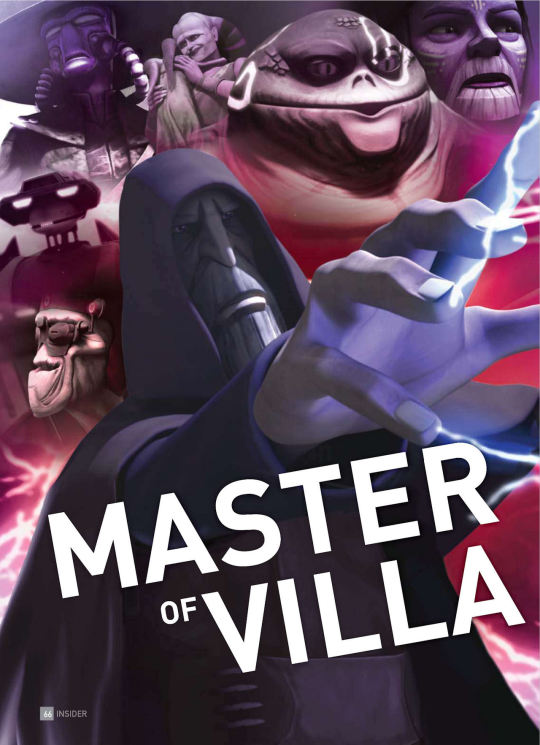
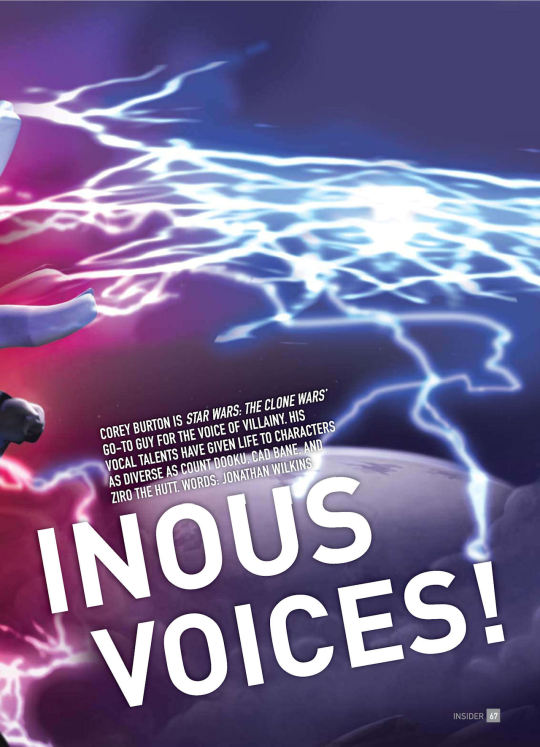


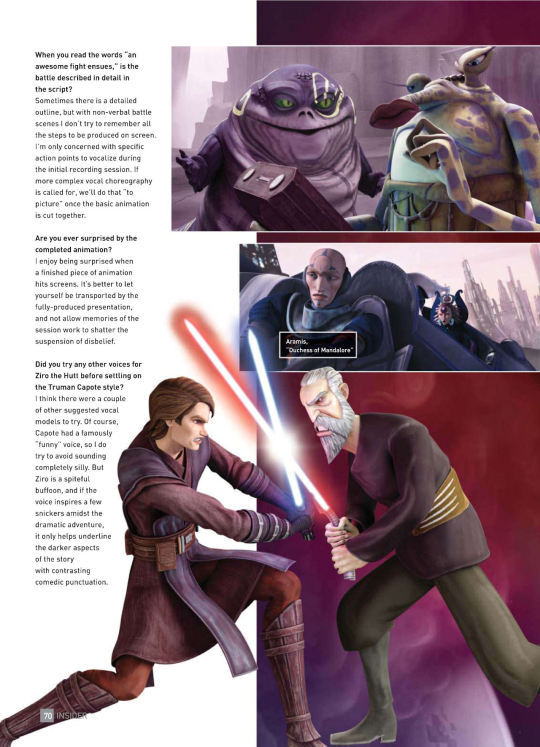

MASTER OF VILLAINOUS VOICES (#122, JAN 2011)
Corey Burton is Star Wars: The Clone Wars’ go-to guy for the voice of villainy. His vocal talents have given life to characters as diverse as Count Dooku, Cad Bane, and Ziro the Hutt. Words: Jonathan Wilkins
Star Wars insider: How do you get into character i before recording?
Corey Burton: I scan the script for an overall “feel,” hearing how it might possibly sound in “the mind’s ear,” and establish rough mental images that tell the story. I do a bit of warm-up to open up the vocal range that will be required for the character that day—usually with a bit of singing and various noises or [by] belting out familiar character phrases. Naturally, over the years, with constant use, the vocal range becomes permanently expanded and seasoned, so there is hardly any need for thorough workouts anymore. But without some kind of warm-up beforehand, that first scream or vocal stunt of the day can wipe out the tone and texture of your voice—possibly for days to come. It’s just like any athletic activity—you have to be mindful about staying in shape to avoid lasting damage.
You’re known for playing villains in The Clone Wars. What makes for a good villain?
A good villain has a mix of every kind of human expression, from the most sincere and noble sense of purpose to our most tragic frailties. They harbor a pain and resentment for one reason or another—which they often mask with smug celebration of their powers—and vary from wildly theatrical to eerily detached. I have played good guys, just no recurring characters for this series. But, as most actors will tell you, it’s much more fun to play villains.
Cad Bane is very much based on the Western movie archetype of the “hired gun.” Which actors inspired his character?
I’ve been saturated with Western films and radio lore all my life. Bane was specifically designed to evoke the Spaghetti Western gunslinger as popularized by Lee Van Cleef. The influence of Peter Lorre was George Lucas’ suggestion, as I understand it, delivered in classic Western outlaw style. I’ve drawn from a few contemporary soft-spoken heavies, along with shades of Humphrey Bogart and maybe Robert Mitchum. I play him like a transplanted European immigrant in the Old West who has adopted the dialect of the place. He’s an extremely cinematic character.
In “Evil Deeds” (note: 3.08 Evil Plans) you have scenes with C-3PO. Given that Anthony Daniels records his performance from London, does this make a sense of interaction challenging?
Cast members usually record together, but in the absence of an actor, we make do with our imagination or mimicked read-ins from another cast-mate. Sometimes Dave [Filoni] will set up our cues with his own loose impression of the missing player. We’re mostly used to solo recording in feature animation work anyway, which is why having a sharp-eared director is essential in making pieced-together interchanges sound believably real-time in the finished soundtrack.
Some actors are sympathetic to their characters’ point of view. Do you think Cad Bane is evil or simply making his way in the universe?
He’s ultimately a dispassionate realist doing a dirty job for his personal survival and enrichment. It’s like he’s choreographing a ballet to complete his missions with heartless grace. His cool, unflappable demeanor overrides any shame that could arise from the cruelty and destructiveness of his methods. He’s just what his benefactors ordered, and nobody does it better.
When you read the words “an awesome fight ensues,” is the battle described in detail in the script?
Sometimes there is a detailed outline, but with non-verbal battle scenes I don’t try to remember all the steps to be produced on screen. I’m only concerned with specific action points to vocalize during the initial recording session. If more complex vocal choreography is called for, we’ll do that “to picture” once the basic animation is cut together.
Are you ever surprised by the completed animation?
I enjoy being surprised when a finished piece of animation hits screens. It’s better to let yourself be transported by the fully-produced presentation, and not allow memories of the session work to shatter the suspension of disbelief.
Did you try any other voices for Ziro the Hutt before settling on the Truman Capote style?
I think there were a couple of other suggested vocal models to try. Of course, Capote had a famously “funny” voice, so I do try to avoid sounding completely silly. But Ziro is a spiteful buffoon, and if the voice inspires a few snickers amidst the dramatic adventure, it only helps underline the darker aspects of the story with contrasting comedic punctuation.
Is it a challenge to play scenes where you are playing two characters talking to each other?
Once the characters are well established, it feels natural to converse between them, even if you’re playing more than one in the same scene. It’s only difficult when the character voice isn’t fully baked yet, and you’ve got to keep reminding yourself what you sounded like in the last take as you alternately perform the other role.
Did you ever anticipate that you’d play a love scene with Sy Snootles?
No—that was just another of the regular surprises that seem to show up in each new script. Who knew?
How much of your own interpretation have you put into Count Dooku?
George Lucas had Dave Filoni relay his wishes for the voice cast to make the characters our own, stressing the importance of playing the role rather than trying to precisely match the voice of the original [live action] actor. What you hear is still based on Christopher Lee, but the actual performance comes purely from my personal sense of his characterization.
The sequence in which Dooku is training Savage Opress is reminiscent of Yoda training Luke. Was it fun playing the “dark side” of Yoda?
I think it’s just a natural master/ protégé training relationship: straightforward instruction peppered with surprise challenges and pointed efforts to trip up and pull the rug out from under the student. It was fun to show Dooku’s paternal impulses seeping through the intimidating lesson plan he [gives Savage] to turn Savage from apprentice to warrior.
Does Count Dooku have any redeeming features?
He’s extremely well-mannered, eloquent, orderly, and tidy down to the smallest of details, and outwardly patient—even as he commits incredibly dastardly acts. He’s always impeccably groomed and stylish, too! He’s classy and ingenious. And he’s remarkably fit for his mature years.
Do you think Dooku knows or suspects Anakin’s connection to the dark side?
Of course. I doubt there is much he wouldn’t at least sense in the infinite matrix of the Force.
VOICES OF EXPERIENCE
Corey Burton learned his trade working with legendary voice actors like Hans Conried (Captain Hook and Snidely Whiplash) and Daws Butler (Yogi Bear among others). What kind of advice did they offer and how has it been useful?
There was literal advice—like, “They are not ‘voices’; they are characters.” Daws would state that he only had a handful of different voices, but a nearly unlimited range of characters he could build using tone, texture, and placement; attitude, accent, pacing, and expression. The character is the star. We use our vocal talents to transport the character off the page to the ears of the audience. So, while we may create an identifiable sound for a character, the voice comes from the writers’ imagination, and we do not own our character voices. Aside from those basics, a great deal came from advice-by-example: seeing how they conducted themselves and how they related to the work and fellow performers. Daws equated us with jazz musicians: We develop our talents and techniques and assemble to make great music together. We do it for the love and appreciation of the words, characters, and stories, in the company of deeply admired fellow creative artists. It’s great to be a part of something that can magically transport and inspire audiences for generations to come. If you’re lucky, you can make a decent living as well!
56 notes
·
View notes
Note
Do you have any headcanons about religious/cultural practices and beliefs in Westeros? How do you think they vary between Dorne, the rest of the South and the North?
I talk to Lilium-convallium (who I know is lurking on this blog 👀 love u darling 🥰) talk about this ALL THE TIME. I need to re read the books because I don’t remember a lot of canon detail honestly so this will not be a meta post, just Vibes.
But how I imagine it when I write about it when I write fic is classical mythology in the form of the Catholic Church. Ancient Valyrian has a very traditional and recognizable mythology that is Greek, Roman or its predecessors/contemporaries like Sumerian or even Egyptian etc. like I picture elaborate burial rituals, Parthenon-like structures, etc. I think when the Targaryens invaded there was some marriage between religious beliefs.
I always imagine the literature of the Seven’s religion to take on much more of the mythologized story/poems/hymns of Ancient Greece, with that strange sort of circular and concurrent timeline, rather than the sort of linear arc that Jewish and Christian texts often seem to be (like, I don’t think, first there was Westerosi Adam and Eve, then Cain and Abel, the Noah, then Abraham, then Isaac and Ishmael, etc. or the idea of a House of David that eventually leads to Jesus, etc within Westerosi religion). It’s not a chronicle. There also appears to be no Savior figure, not in the Christian conception of a deity come to Earth. We have Azor Azhai but that is more reminiscent of Arthur—an extraordinary man with magical friends and strength of character rather than a literal God—and has the vagueness of many prophesies that appear in Greek or Roman mythology.
A lot of Southron Westeros is very Italian/Roman to me. The Lannisters are blatantly copied from the Borgias imo (side note: Tyrion’s storyline is literally about GRRM’s journey to atheism you cannot change my mind), the High Sparrow storyline is literally just Savonarola fanfic (the way the tale of Baelor the Blessed contains elements of George III fanfic). So the form that religion takes in Westeros is Catholic and thus really tactile as opposed to the more academic Protestant religions. Even though we have maesters, I think a lot of the social programming is provided by septons and septas. We also have, however, the sept taking indulgences, lots of man-created liturgies, cult sites, pilgrim tokens and relic tours—all the hallmarks of medieval Catholicism. Can you imagine how sexy Westerosi sainthood could be?!?! They don’t mention it like that but like—I love this idea!
I think it would be interesting to lean into that—are there different varieties of septon, the way there are Cistercians and Benedictines and Franciscans? (I literally am obsessed with monasticism don’t mind me) I think it would also be interesting to consider potential schisms—Like Eastern Orthodoxy and the Western Churches. To me, the schism would clearly occur in Dorne. Do the Dornish practice the Seven? I don’t remember tbh but any form of the Seven would be distinct in Dorne from the rest of Westeros.
The North reminds me of Christianized Scandanavia where many of the indigenous mythologies were re-adapted to folklore and superstitions and occurred alongside the practice of Christianity. The Northern religion is fascinating to me—there is no pantheon. I like to envision its stories as being Celtic or Norse but I think this would take the form of the non-god related stories: giants, fae, brownies, Tolkien-style dwarves. I think there’s something apocalyptic about Northern mythologies—celestial battles, etc. Their traditions are oral, often sung—later developing into troubadours—and stories of heroes similar to Beowulf, Fionn mac Cumhaill, etc. would be popular as well as fabled histories similar to the Aeneid, Arthur, or the Iliad. I don’t think they would have fondness for trickster characters like Loki or Odysseus and would instead focus on the moral or chivalric meanings of the myths.
The Red Priests and Priestesses are Zoroastrians. And I think that’s cool because Zoroastrians are cool.
Anyway, those are my initial thoughts. More will bubble up—this is my literal favorite topic. What about your head canons?
16 notes
·
View notes
Text
Why the Clone problem in Star Wars animated media is also a Mandalorian problem, and why we have to talk about it (PART 2)
Hi! I finally finished wrapping this up, so here’s part 2 of what has already become a mini article (you can find Part 1 here, if you like!)
And for this part, it won’t be as much as a critic as part 1 was, but instead I’d like to focus more on what I consider to be a wasted potential regarding the representation of the Clones in the Star Wars animated media, from the first season of The Clone Wars till now, and why I believe it to be an extension of the Mandalorian problem I discussed in part 1 — the good old colonialism.
Sources used, as always, will be linked at the end of this post!
PART 2: THE CLONES

Cody will never know peace
So I’d like to state that I won’t focus as much on the blatantly whitewashing aspect, for I believe it to be very clear by now. If you aren’t familiar with it, I highly recommend you search around tumblr and the internet, there are a lot of interesting articles and posts about it that explain things very didactically and in detail. The only thing you need to know to get this started is that even at the first seasons of Clone Wars (when the troopers still had this somewhat darker skin complexion and all) they were still a whitewashed version of Temuera Morrison (Jango’s actor). And from then, as we all know, they only got whiter and whiter till we get where we are now, in rage.
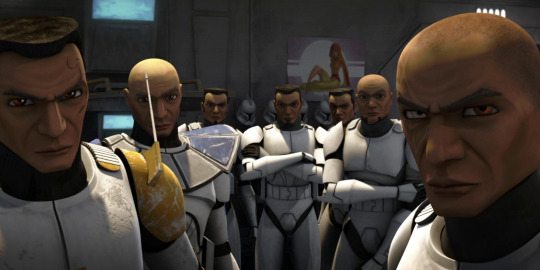
Look at this very ambiguously non-white but still westernized men fiercely guarding their pin-up space poster

Now look at this still westernized but slightly (sarcasm) whiter men who for some reason now have different tanning levels among them (See how Rex now has a lighter skin tone? WHEN THE HELL DID THAT HAPPEN KKKKKKK) Anyway you got the idea. So without further ado...
2.1 THE FANTASY METAPHOR
As I mentioned before in Part 1, one thing that has to be very clear if you want to follow my train of thought is that it’s impossible to consume something without attributing cultural meanings to it, or without making cultural associations. This things will naturally happen and it often can improve our connection to certain narratives, especially fantastic ones. Even if a story takes place in a fantastic/sci fi universe, with all fictional species and people and worlds and cultures, they never come from nowhere, and almost always they have some or a lot of basing in real people and cultures. And when done properly, this can help making these stories resonate in a very beautifull, meaningfull way. I actually believe this intrisic cultural associations are the things that make these stories work at all. As the brilliant american speculative/science fiction author Ursula K. Le Guin says in the introduction (added in 1976) of her novel The Left Hand of Darkness, and that I was not able to chopp much because it’s absolutely genious and i’ll be leaving the link to the full text right here,
“The purpose of a thought-experiment, as the term was used by Schrodinger and other physicists, is not to predict the future — indeed Schrodinger's most famous thought-experiment goes to show that the ‘future,’ on the quantum level, cannot be predicted — but to describe reality, the present world.
Science fiction is not predictive; it is descriptive.”
[...] “Fiction writers, at least in their braver moments, do desire the truth: to know it, speak it, serve it. But they go about it in a peculiar and devious way, which consists in inventing persons, places, and events which never did and never will exist or occur, and telling about these fictions in detail and at length and with a great deal of emotion, and then when they are done writing down this pack of lies, they say, There! That's the truth!
They may use all kinds of facts to support their tissue of lies. They may describe the Marshalsea Prison, which was a real place, or the battle of Borodino, which really was fought, or the process of cloning, which really takes place in laboratories, or the deterioration of a personality, which is described in real textbooks of psychology; and so on. This weight of verifiable place-event-phenomenon-behavior makes the reader forget that he is reading a pure invention, a history that never took place anywhere but in that unlocalisable region, the author's mind. In fact, while we read a novel, we are insane —bonkers. We believe in the existence of people who aren't there, we hear their voices, we watch the battle of Borodino with them, we may even become Napoleon. Sanity returns (in most cases) when the book is closed.”
[...] “ In reading a novel, any novel, we have to know perfectly well that the whole thing is nonsense, and then, while reading, believe every word of it. Finally, when we're done with it, we may find — if it's a good novel — that we're a bit different from what we were before we read it, that we have been changed a little, as if by having met a new face, crossed a street we never crossed before. But it's very hard to say just what we learned, how we were changed.
The artist deals with what cannot be said in words.
The artist whose medium is fiction does this within words. The novelist says in words what cannot be said in words. Words can be used thus paradoxically because they have, along with a semiotic usage, a symbolic or metaphoric usage. [...] All fiction is metaphor. Science fiction is metaphor. What sets it apart from older forms of fiction seems to be its use of new metaphors, drawn from certain great dominants of our contemporary life — science, all the sciences, and technology, and the relativistic and the historical outlook, among them. Space travel is one of these metaphors; so is an alternative society, an alternative biology; the future is another. The future, in fiction, is a metaphor.
A metaphor for what?” [1]
A metaphor for what indeed. I won’t be going into what Star Wars as a whole is a metaphor for, because I am certain that it varies from person to person, and everyone can and has the total right to take whatever they want from this story, and understand it as they see fit. That’s why it’s called the modern myth. And therefore, all I’ll be saying here is playinly my take not only on what I understand the Clones to be, but what I believe they could have meant.
2.2 SO, BOBA IS A CLONE
I don’t want to get too repetitive, but I wanted to adress it because even though I by no means intend to put Boba and the Clones in the same bag, there is one aspect about them that I find very similar and interesting, that is the persue of individuality. While the Clones have this very intrinsically connected to their narratives, in Boba’s case this appears more in his concept design. As I mentioned in Part 1, one of the things the CW staff had in mind while designing the mandalorians is that they wanted to make Boba seem unique and distinguishable from them, and honestly even in the original trilogy he stands out a lot. He is unique and memorable and that’s one of the things that draws us to him.
And as we all know, both Boba and Jango and the Clones are played by Temuera Morrison — and occasionally by the wonderful Bodie Taylor and Daniel Logan. And Temuera Morrison comes from the Maori people. And differently from the mandalorian case, where we were talking about a whole planet, in this situation we’re talking about portraying one single person, so there’s nowhere to go around his appearance and phenotypes, right? I mean, you are literally representing an actual individual, so there’s no way you could alter their looks, right?
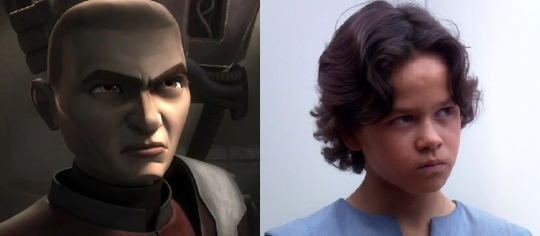
(hahahaha wrong)
And besides that, I think that is in situations like that (when we are talking about individuals) that the actor’s perspective could really have a place to shine (just the same as how Lea was mostly written by Carrie Fisher). In this very heart-warming interview for The New York Times (which you can read full signing up for their 5-free-articles-per-month policy), Temuera Morrison talks a little bit about how he incorporated his cultural background to Boba Fett in The Mandalorian:
“I come from the Maori nation of New Zealand, the Indigenous people — we’re the Down Under Polynesians — and I wanted to bring that kind of spirit and energy, which we call wairua. I’ve been trained in my cultural dance, which we call the haka. I’ve also been trained in some of our weapons, so that’s how I was able to manipulate some of the weapons in my fight scenes and work with the gaffi stick, which my character has.” [2]
The Gaffi stick (or Gaderffii), btw, is the weapon used by the Tusken Raiders on Tatooine, and according to oceanic art expert Bruno Claessens it’s design was inspired by wooden Fijian war clubs called totokia. [3]
And I think is very clear how this background can influence one’s performance and approach to a character, and majorly how much more alive this character will feel like. Beyond that, having an actor from your culture to play and add elements to a character will higly improve your sense of connection with them (besides all the impact of seeying yourself on screen, and seeying yourself portrayed with respect). It would only make sense if the cultural elements that the actor brought when giving life to a fictional individual would’ve been kept and even deepened while expanding this role. And if you’re familiar with Star Wars Legends you’ll probably rememeber that in Legends Jango would train and raise all Clone troopers in the Mandalorian culture, so that the Clones would sing traditional war chants before battles, be fluent in Mando’a (Mandalore’s language) and some would proudly take mandalorian names for themselves. So why didn’t Filoni Inc. take that into account when they went to delve into the clones in The Clone Wars?
2.3 THE WHITE MINORITY
First of all I’d like to state that all this is 100% me conjecturing, and by no means at all I’m saying that this is what really happened. But while I was re-watching CW before The Bad Batch premiere, something came to my mind regarding the whitewashing of the Clones, and I’d like to leave that on the table.
So, you know this kind of recent movies and series that depicted like, fairies in this fictional world where fairies were very opressed, but there would be a lot of fairies played by white actors? Just like Bright and Carnival Row. If you’ve watched some of these and have some racial conscience, you’ll probably know where I’m going here. And the issue with it is that often this medias will portray real situations of racism and opression and prejudice, but all applied to white people. Like in Carnival Row, when going to work as a maid in a rich human house, our girl Cara Delevingne had to fight not to have her braids (which held a lot of significance in her culture) cut by her intolerant human mistress, because the braids were not “appropriate”. Got it? hahahaha what a joy

Look at her ethnic braids!!!
One of the reasons this happens might be to relieve a white audience of the burden of watching these stories and feeling what I like to call “white guilt”. Because, as we all know, white people were never very oppressed. Historically speaking, white people have always been in privileged social positions, and in an exploitative relationship between two ethnic groups, white people very usually would be the exploiters — the opressors. So while watching situations (that every minority would know to be very real) of opression in fiction, if these situations were lived by a white actor, there would be no real-life associations, because we have no historical parameter to associate this situation with anything in real life — if you are white. Thus, there is less chance that, when consuming one of these narratives, whoever is watching will question the "truthfulness" of these situations (because it's not "real racism", see, "they're just fairies"). It's easier for a person to watch without having to step out of their comfort zone, or confront the reality of real people who actually go through things like that. There's even a chance that this might diminish empathy for these people.
Once again, not saying this is specifically the case of the Clones, majorly because one of the main feelings you have when watching CW is exactly empathy for the troopers (at least for me, honestly, the galaxy could explode, I just wanted those poor men to be happy for God’s sake). But I’ll talk more about it later.
The thing is, the whole thing with the Clones, if you think about it, it’s not pretty. If you step on little tiny bit outside the bubble of “fictional fantasy”, the concept is very outrageous. They are kept in conditions analogous to slavery, to say the least. To say the more, they were literally made in an on-demand lab to serve a purpose they are personally not a part of, for which they will neither receive any reward nor share any part of the gains. On the contrary, as we saw in The Bad Batch, as soon as the war was over and the clones were no longer useful as cannonballs, they were discarded. In the (wonderful) episode 6 of the third season of (the almost flawless) Rebels, “The Last Battle”, we're even personally introduced to the analogy that there really wasn't much difference in value between clones and droids, something that was pretty clear in Clone Wars but hadn't been said explicitly yet.
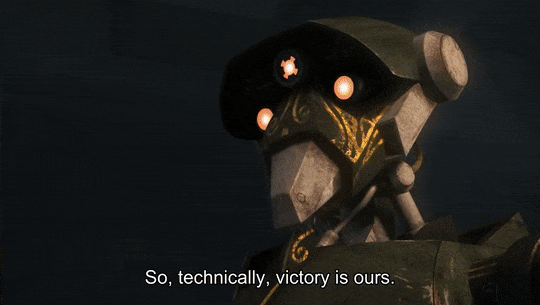
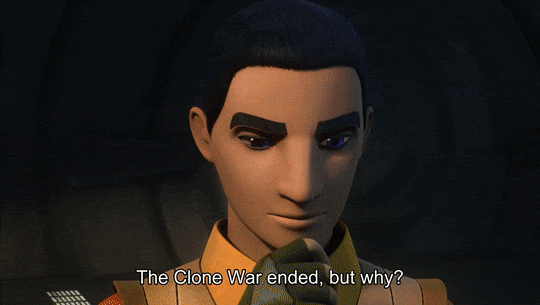
In fact, technically the Separatists can be considered to be more human than the Republic. But that's just my opinion.
So, you had this whole army of pretty much slaves. I know this is a heavy term, but these were people who were originally stripped of any sense of humanity or individuality, made literally to go to war and die in it, doing so purely in exchange for food and lodging, under the false pretense that they belonged to a glorious purpose (yes, Loki me taught that term, that was the only thing I absorbed from this series). Doing all this under extremely precarious conditions from which they had no chance of getting out, actually, getting out was tantamount to the death penalty. They were slaves. In milder terms, an oppressed minority. And again, I don't know if that was the case, but I can understand why Filoni Inc would be apprehensive about representing phenotically indigenous people in this situation. Especially since we in theory should see Anakin and Obi-Wan as the good guys.
(and here I’d like to leave a little disclaimer that I believe the whole Anakin-was-a-slave-once plot was HUGELY misused (and honestly just badly done) both in the prequels and in the animeted series — maybe for the best, since he was, you know, white and all that, and I don’t know how the writers would have handled it, but ANYWAY — I believe this could have been further explored, particularly regarding his relationship with the Clones, and how it could have influenced his revolt against the Jedi, and manipulated to add to his anger and all that. I mean, we already HAD the fact that Anakin shared a deeper conection with his troopers than usual)
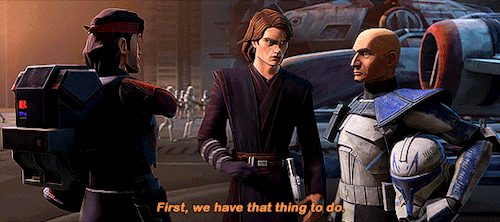

Yes, Rex, you have common trauma experiences to share. But anyway, backing to my track
As I was saying, we are to see them as good guys, and maybe that could’ve been tricky if we saw them hooping up on slavery practices. Like, idk, a “nice” sugar plantation owner? (I don’t know the correct word for it in english, but in portuguese they were called senhores de engenho) Like this guy from 12 Years a Slave?

You know, the slave owner who was “nice”. IDK, anyway
No one will ever watch Clone Wars and make this association (I believe not, at least), of course not. But if we were to see how CW deepened the clone arcs, and see them as phenotypically indigenous, subjected to certain situations that occur in CW (yes, like Umbara), maybe some kind of association would’ve been easier to make.
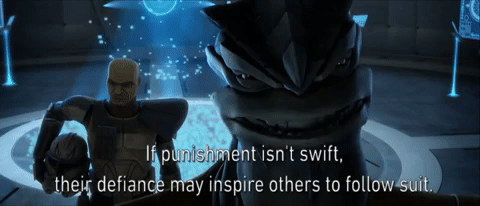
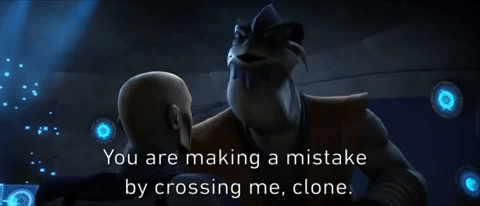
I mean, come onnnn I can’t be the only one seeing it
You see, maybe not the whole 12 Years a Slave association one, but I don’t think it’s hard to see there was something there. And maybe this could’ve been even more evident if they looked non-white. Because historically, both black peoples and indigenous peoples went through processes of slavery, from which we as a society are still impacted today. And to slave a people, the first thing you have to do is strip them from their humanity. So it might be easier to see this situation and apply it to real life. And maybe that could lead to a whole lot of other questions regarding the Clones, the Republic, the Jedi, and even how chill Obi-Wan was about all this. We might come out of it, as lady Ursula Le Guin stated in the fragment above, a bit different from what we were before we watch it.
Maybe even unconsciously, Filoni Inc thought we would be more confortable watching if they just looked white (and because of colonialism and all that, but I’m adding thoughts here).
And of course I don’t like the idea of, idk, looking at Obi-Wan and thinking about Benedict Cumberbatch in 12 Years a Slave or something like that. Of course that, if the Clones were to play the same role as they did in the prequels, to obediently serve the Jedi and quietly die for them, that would have been bad, and hurtfull, and pejorative if added to all that I said here. But the thing is that Clone Wars, consciously or not, already solved that. At least to my point of view, they already managed to approach this situation in an incredible competent way, that is giving them agency.
2.4 AGENCY AND INDIVIDUALITY
So, one of the things I love most in Clone Wars is how it really feels like it’s about the Clones. Like, we have the bigger scene of Palpatine taking over, Ahsoka’s growth arc, Anakin’s turn to The Dark Side, the dawn of the Jedi and rise of the Empire and all that, but it also has this idk, vibe, of there’s actually something going on that no one in scene is talking about? And this something is the Clones. We have these episodes spread throughout the seasons, even out of chronological order, which when watched together tell a parallel story to the war, to everything I mentioned. Which is a story about individuals. Clone Wars manages to, in a (at least to me) very touching way, make the Clones be the heros.

Can you really look me in the eye and say that Five’s story didn’t CRASH you like a full-speed train???? He may not have the same amount of screen-time as the protagonists, but his story is just as important as theirs (and to me, it might be the most meaningful one). Because he is the first to break free from the opression cicle all the Clones were trapped into.

His story can be divided into 6 phases.
1 - First, the construction of his individuality, in other words, the reclaiming of his humanity.
2 - Then the assimilation of understanding yourself as an individual of value, and then extending this to all his brothers, not as a unit, but as a set of individuals collectively having this same newly discovered value.
3 - This makes him realize that in the situation they find themselves in, they are not being recognized as such. This makes him question the reality of their situation.
4 - Freed from the illusion of his state, he seeks the truth about it.
5 - This then leads him to seek liberation not just for himself, but for all the Clones (it's basically Plato's Cave, and I'm not exaggerating here).
6 - And finally, precisely because he has assimilated his individuality and sought freedom for himself and his brothers, he is punished for it.
His story is all about agency. Agency, according to the Wikipedia page that is the first to appear if you type “agency” on Google, is that agency is “the abstract principle that autonomous beings, agents, are capable of acting by themselves” [4], and this abstract principle can be dissected in 7 segments:
Law - a person acting on behalf of another person
Religious - "the privilege of choice... introduced by God"
Moral - capacity for making moral judgments
Philosophical - the capacity of an autonomous agent to act, relating to action theory in philosophy
Psychological - the ability to recognize or attribute agency in humans and non-human animals
Sociological - the ability of social actors to make independent choices, relating to action theory in sociology
Structural - ability of an individual to organize future situations and resource distribution
All of them apply here. And this is just the story of one Clone. We know there are many others throughout the series.
Agency is what can make the world of a difference when you are telling a story about an opressed minority. Because opressed minorities do exist, and opression exists, and if you are insecure about consuming a fictional media about opressed minorities, see if they have agency might be a good place to start. So that’s why I think that everything I said before in 2.3 falls short. Because the solution already existed, and was indeed done. Honestly, making the non-agency representation of the Clones (the one we see in the prequels) to be the one played by Temuera Morrison, and then giving them agency in the version where they appear to be white, just leaves a bitter taste in my mouth.
And honestly, if they were to make the Clones look like Temuera Morrison, and by that mean, take more inspiration in the Māori culture, maybe they wouldn’t even have to change much of their representation besides their facial features. As I said in part 1, I am not by any means an expert in polynesian cultures, but there was something that really got me while I was researching about it. And is the facial tattoos. More precisely, the tā moko.
2.5 TĀ MOKO
Once again I’ll be using the Te Ara: The Encyclopedia of New Zealand as source, and you can find the articles used linked at the end of this post.
Etymologically speaking,
“The term moko traditionally applied to male facial tattooing, while kauae referred to moko on the chins of women. There were other specific terms for tattooing on other parts of the body. Eventually ‘moko’ came to be used for Māori tattooing in general.” [5]
So moko is the correct name for the characteristic tattoos we often see when we look for Māori culture.
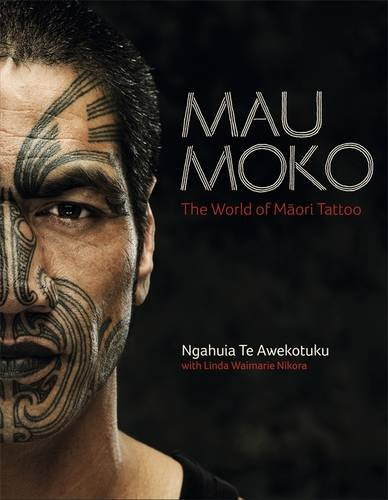
These ones ^. Please also look this book up, it’s beautiful. It’s written by Ngahuia Te Awekotuku, a New Zealand academic specialising in Māori cultural issues and a lesbian activist. She’s wonderful.
According to the Tourism NewZealand website,
“In Māori culture, it [moko] reflects the individual's whakapapa (ancestry) and personal history. In earlier times it was an important signifier of social rank, knowledge, skill and eligibility to marry.”
“Traditionally men received moko on their faces, buttocks and thighs. Māori face tattoos are the ultimate expression of Māori identity. Māori believe the head is the most sacred part of the body, so facial tattoos have special significance.”
[...] “The main lines in a Māori tattoo are called manawa, which is the Māori word for heart.” [6]
Therefore, in the Māori culture, there’s this incredibly deep meaning attributed to the (specific of their culture) tattooing of the face. The act of tattooing the body, any part of the body, is incredibly powerful in many cultures around the globe. The adornment of the body can have different meanings for these different cultures, but all of which I've come into contact with do mean a lot. It’s one of the oldest and most beautiful human expressions of individuality and identity.
And in the Star Wars universe, the Clones are the group that has the deeper connection to, and the best narrative regarding, tattoos. In fact, besides Hera’s father, Cham Syndulla, the Clones are the only individuals to have tattooed skin, at least that I can recall of. And they do share a deep connection to it.
For the Clones, the tattoos (added to hairstyles) are the most meaningful way in which they can express themselves. Is what makes them distinguishable from each other to other people. Tattoos are one of the things that represent them as individuals.

And I’m not BY ANY MEANS sayin that the Clones facial tattoos = Moko. That’s not my point. But that’s one of the things I meant when I said earlier about the wasted potential of the representation of the Clones (in my point of view). Because maybe if it were their intention to base the culture of the clones after the polynesian culture, maybe if it were their intention to make the Clones actually look like Temuera Morrison, this could have meant a whole deal. More than it’d appear looking to it from outside this culture. Maybe if there were actual polynesian people in the team that designed the Clones and wrote them (or at least indigenous people, something), who knows what we could’ve had.
Even in Hunter’s design, I noticed that if you take for example this frame of Temuera from the movie River Queen (2005), where we can have a closer look at the design of his tā moko
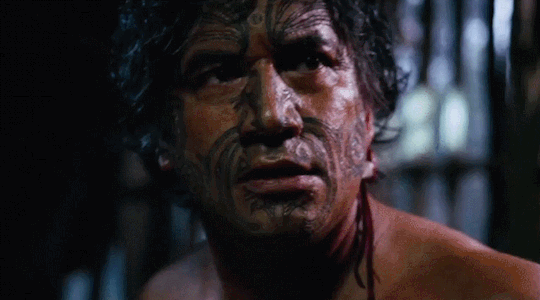
Speaking purely plastically (because I don’t want to get into the movie itself, just using it as example because then I can use Temuera himself as a comparison), see the lines around the contours of his mouth? Now look at Hunter’s.

I find it interesting that they choose to design this lines coming from around his nose like that. But at this point I am stretching A LOT into plastic and semiotics, so this comparison is just a little thing that got my attention. I know that his tattoo is a skull and etc etc, I’m just poiting this out. And it even makes me a little frustrated, because they could have taken so many interesting paths in the Bad Batch designs. But instead they choose to pay homage to Rambo. And I mean, I like Rambo, I think he’s cool and all that.
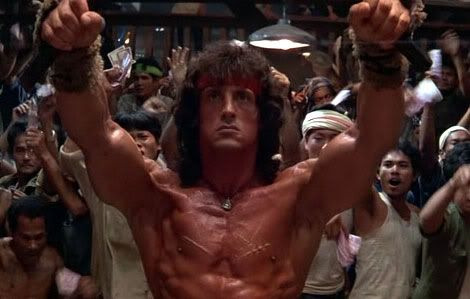
Look at him doing Filipino martial arts
But then, as we say in Brasil, they had the knife and the cheese in their hands (all they had to do was cut the cheese, but they didn’t). Istead, it seems like in order to make Hunter look like Rambo, they made him even whiter???
2.6 SO...
Look, I love The Clone Wars. I’m crazy about it. I love the Clones, I love their stories and plots. They are great characters and one of the greatest addings ever made in the Star Wars universe. They even have, in my opinion, the best soundtrack piece to feature in a Star Wars media since John Williams’ wonderful score. It just feels to me as if their narrative core is full of bagage, and meanings, and associations that were just wiped under the carpet when they suddenly became white. It just feels to me as if, once again, they were trying to erase the person behing the trooper mask, and the people they were to represent, and the history they should evoke.
I don’t know why they were whitewashed. Maybe it was just the old due racism and colonialism. Maybe it was meant for us to not question the Jedi, or our good guys, or the real morality of this fictional universe where we were immersed. But then, was it meant for what?
The Clones were a metaphor for what?

(spoiler: the answer still contains colonialism)
Thank you so much for reading !!!! (and congratulations for getting this far, you are a true hero)
SOURCES USED IN THIS:
[1] Ursulla K. Le Guin, 'The Left Hand of Darkness', 14th ACE print run of June, 1977
[2] Dave Itzkoff, 'Being Boba Fett: Temuera Morrison Discusses ‘The Mandalorian’', The New York Times, published Dec. 7, 2020, https://www.nytimes.com/2020/12/07/arts/television/the-mandalorian-boba-fett-temuera-morrison.html (accessed 15 September 2021)
[3] Bruno Claessens, 'George Lucas' "Star Wars" and Oceanic art' , Archived from the original on December 5, 2020, https://web.archive.org/web/20201205114353/http://brunoclaessens.com/2015/07/george-lucas-star-wars-and-oceanic-art/#.YEiJ-p37RhF (accessed 15 September 2021)
[4] Wikipedia contributors, "Agency," Wikipedia, The Free Encyclopedia, https://en.wikipedia.org/w/index.php?title=Agency&oldid=1037924611 (accessed September 17, 2021)
[5] Rawinia Higgins, 'Tā moko – Māori tattooing - Origins of tā moko', Te Ara - the Encyclopedia of New Zealand, http://www.TeAra.govt.nz/en/ta-moko-maori-tattooing/page-1 (accessed 17 September 2021)
[6] Tourism New Zealand, ‘The meaning of tā moko, traditional Māori tattoos’, The Tourism New Zealand website, https://www.newzealand.com/us/feature/ta-moko-maori-tattoo/ (accessed 17 September 2021)
#THE CLONES DESERVED BETTER WE ALL KNOW IT#star wars#star wars animated series#the bad batch#clone troopers#tbb#mandalorian#colonialism#whitewashing#UnwhitewashTBB#semiotics#visual culture#cw#the clone wars#star wars the clone wars#rex#hunter#the bad batch hunter#dave filoni#temuera morrison#maori culture#moko#anakin skywalker#star wars rebels#obi wan#capitan rex#cody
27 notes
·
View notes
Note
I still can't remember why I started following you or who you are, but I love to see your funky lil posts on my dash.
Anyway, what about ww1 do you find so fascinating? I've never been into wars myself, so I'm curious on the appeal and what specifically you're into about it. Is it the planes and stuff like that? Genuinely curious about what you personally like researching about this topic, I've never gotten to actually ask someone into the ww why.
thank you, that means a lot to me!!! sometimes tumblr makes ppl follow other people randomly so it means a lot that you've stuck around 💕 (im gatz and i post airplanes :-) )
my relationship to a lot of military stuff is really complicated but one of my great-grandfathers served in ww1 for germany and another in the usaaf in ww2 so i grew up with a lot of stories about them and i really want to find out more about their lives- the first one died when my grandpa was a little younger than me, but i heard a lot about him, and the second died when i was a lot younger and couldn't really conceptualize any of that stuff so i regret not asking him more questions.
i also ended up doing ww related stuff last year in school and there was some point at which that just clicked. i already had a lot of background information and i had read war novels before but literally it was like someone just hit me over the head and i went holy fuck! this is really interesting and i understand it! and i took a really really awesome ww2 class last semester and it was just SO interesting. as for aviation, i honestly prefer many airplanes pre-jet age... i've always LOVED aviation (again something i can't explain) and so learning about von richthofen and interwar/golden age of aviation and then corsairs my beloved ❤️ i love them. they're literally my best friends.
researching like...the causes of war, what happened during it, and the effect it had on people after is, imo, really essential to wholly understanding history. for example, wwi was the first example of mechanized warfare, and the immense tragedy and devastation and ugliness of it gave rise to the roaring 20s and there were SO many societal, political, and economic events that took place in such a short time that permanently altered human history and cultural beliefs. i think examining personal stories from wars is also invaluable because it gets really easy to just think of everything as statistics. but idk like the interaction between military and the contemporary culture as a whole is so interesting and there's so many consequences of these conflicts that you can trace directly to today. i think it's less of a traditional 'free serotonin' hyperfixation and more of something that's really challenging to learn about and examine which is a lot more engaging to me than regular idk fluffy stuff. No shade ofc im just kind of insane.
i also think that works of art produced as a direct result of the wars are really fascinating and many of them have influenced our present day culture. see all quiet on the western front, catch-22, the short timers (full metal jacket is much more influential but imo the book is better), and a lot of other books like this. additionally otto dix's der krieg series:

i don't know. i feel like this is Such a non-answer but the fact is that war influences all of our lives no matter what and it's genuinely really interesting to examine my personal connections, personal stories of people who were in them, and how it influences culture. and also airplanes - a lot of advancements in them were responses to what was needed in times of war which is why we went from the wright flyer to gotha g.v. and fokker dr.1s in the span of 15 years. i know some people are just interested in the technology and stuff which seems to be more common in a lot of online spaces but y'know. the human factor is really important. let me know if you have any other questions or want to know specifics!
#askz#hallucinatoryhollows#gas masks#long post#idk this is NOT the best of most succinct response in the world. so i might come back and edit it because i feel like i could word it#a lot better. but idk theres just stuff in my brain pretty much and it influences my antiwar politics as well#ofc being antiwar is better than pro war but i think its best to be informed about any stances you take#like personal stories . why wars happen. what effect it has#etc etc etc etc . idk theres a lot!
9 notes
·
View notes
Text
Performance Writing

‘Letter of Resignation’ - performance writing.
This last year in particular I have started to become more comfortable with the fact that I am as excited by the performative act of making as I am by the consequential drawing or print. I think because my research has led to intense discourse about the disappearance of handwriting, I have become increasingly aware of this being an important aspect of my practice. As such I have started to document the process and creation of some artworks, regarding these performances just as important as than the finished outputs themselves.
These drawings were mostly produced at home, but eventually became tiresome and monotonous. I think because I was limited to the desk in my bedroom, I felt as though everything was whispered and restricted. Once university began to slowly reopen I was able to get hold of a space big enough that I could really spread out, and when not confined by space I was able to shout about how I was feeling rather than whisper. This release was exactly what I needed to breathe a bit of life back into my practice and I am very excited by the results.
The following performances are titled ‘Letters of Resignation’. The title is an homage to the works of the same name by Cy Twombly, an artist that is widely recognised for his works that have quite clear connections to asemic writing. Furthermore there are many suggestions that can be derived from this title; letters in the sense of individual written characters, letters that we write in correspondence, resigning from a job and resigning to the fact that this is just how life is now. I enjoyed the multiple meanings that can be deduced from this, just as there are multiple ways that we can read and understand asemic writing.
youtube
‘Letter of Resignation’ - performance writing.
youtube
‘Letter of Resignation’ - performance writing.
I conducted this series of performances because I wanted to spread out and enjoy not being limited to a domestic space. I unravelled a roll of Fabriano paper and performed a series of asemic written works to music with a mop, a handheld jug mop, and a drawing instrument that I made with bamboo cane and string. These instruments are all evidently larger than a pen or paintbrush, and so in writing with these on the oversized paper I was making myself more aware that this performance was more of a spectacle than writing at my desk with a pen.
I write every single day, therefore I perform every day, and yet I was not consciously aware that the performance was taking place. It is interesting that the change in writing implement made me acutely alert to this fact. This is definitely something to think about in terms of the context of how or where the performance is taking place.
Does a performance need to be documented or witnessed in order to describe it as a performance? If I sit at my desk and write a letter, is it any less performance as it would be to do the exact same thing but go live on social media whilst doing it? Is every act of writing a performance, or is it a performance because it is labelled as such? I have begun to read more about some artists that explore performance in their practice in the hopes of learning more about why this method of communicating my ideas has peaked my interest.
Inoue Yûichi
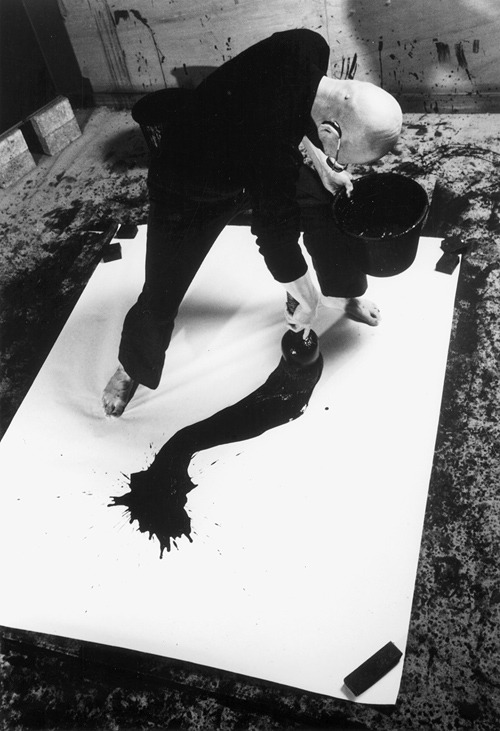
Inoue Yûichi in his studio by Itô Tokio, 1984 - photograph.
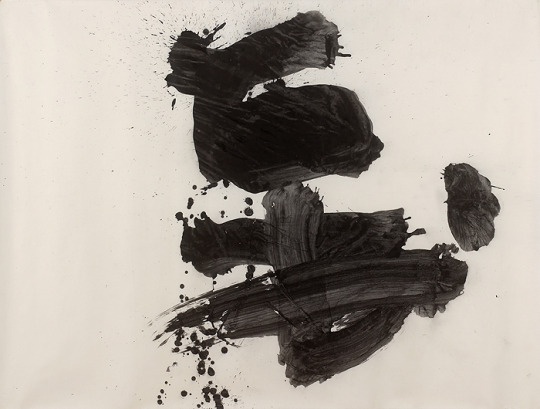
‘Katsu (Sound of Metal)’ by Inoue Yûichi, 1977 - ink on paper.
Inoue Yûichi, was a Japanese artist who began working as a primary school teacher, before retraining under the tutelage of calligrapher, Ueda Sokyu. He came to the practice later on in life but is now regarded as one of the most esteemed Japanese artists of the last century. He co-founded the avant-garde society for calligraphy which in turn saw his push for liberation from calligraphy’s traditional roots, advocating documentation of the calligrapher’s physical movements and energy as being equally as paramount as the textual pieces themselves.
Yûichi depicts traditional Japanese kanji characters, having been predominantly inspired by traditional masters of Japanese calligraphy, but performs them in such a way that has been likened to abstract expressionist action painters. This meeting of Eastern and Western culture culminates in a performative practice that is a pure expression of being in the present moment. He allowed himself to enter a state of calm that is standard practice of the Japanese art of ‘Shodo’, which connects the mind with the body. This calm state of being is thus expressed in his written performance.
Nakajima Hiroyuki
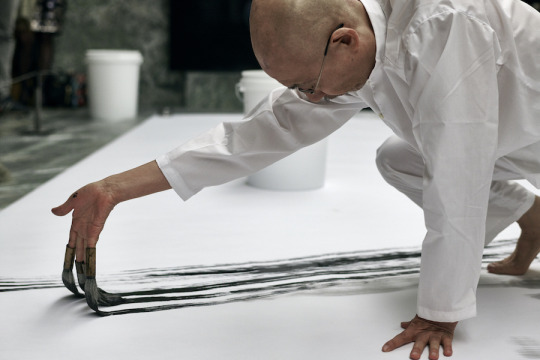
‘Calligraphies Sonores’ by Nakajima Hiroyuki, 2018 - performance at Villa Cavrois Lille in France.
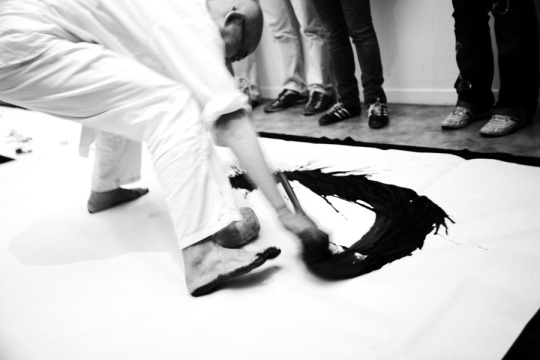
‘Shizen’ by Nakajima Hiroyuki, 2012 - performance at Galeria Nobili Milano in Italy.
Nakajima Hiroyuki is a performance artist, also from Japan, but learnt the art of Shodo from a young age. Hiroyuki understood that the art of calligraphy was highly sought after, but recognised that it had the potential to surpass tradition. He began to create abstract artworks based on his deep knowledge of Japanese calligraphy.
Not long after he began exhibiting his calligraphic abstract forms, he introduced elements of Tai Chi in to his practice, aiming to establish the process of calligraphy by way of performance. He begins his performances by standing in a meditative situation, as per traditional Shodo practices, and then in one swift movement he creates his written thoughts as an evidence of that point in time.
Hiroyuki says:
“Every work of "Sho" is created in one continuous motion, and therefore cannot be repeated or re-written. The power of "Sho" lies in this feature of non-recurrence. Even if you draw the same letter ten times, ten different forms will arise spontaneously.”
I am drawn to the sense of calm and quiet in both Yûichi and Hiroyuki’s performances. The influence of Zen Buddhism and traditional leanings makes for a great basis on which to build from. They utilise traditional ideas in conjunction with contemporary art practice to create performance writings that are not only dynamic but also speak of their cultural backgrounds.
James Nares
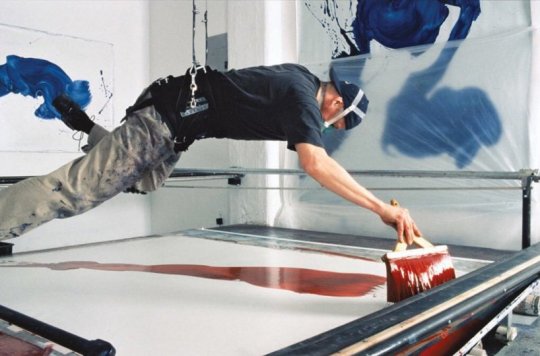
James Nares is a multi-disciplinary artist whose practice includes; film, music, painting, photography and performance. He uses these methodologies to explore ideas of physicality and motion.
In the 1980s Nares began creating what are now his iconic brush stroke calligraphic paintings. These paintings document a gestural and expressive moment, a record of motion across the surface, and are inspired by Roy Lichtenstein’s own depictions of brush strokes.
Nares suspends himself on wires above the canvas in what looks to be a slightly precarious Mission Impossible manner. This inclusion of an outside source in which to aid the creation of the painting further enhances the idea of performance, bringing an element of true action to the forefront of the drawing. The innovative employment of the wires does add an extra dimension to the works, though I would tend to think that they are required for logistic purposes as opposed to it being performance art. Nevertheless it is an interesting way in which to create a drawing, and an added point of interest.

‘Girl About Town’ by James Nares, 2017 - screenprint on paper.

‘Damian’ by James Nares, 2014 - screenprint on paper.
Janine Antoni
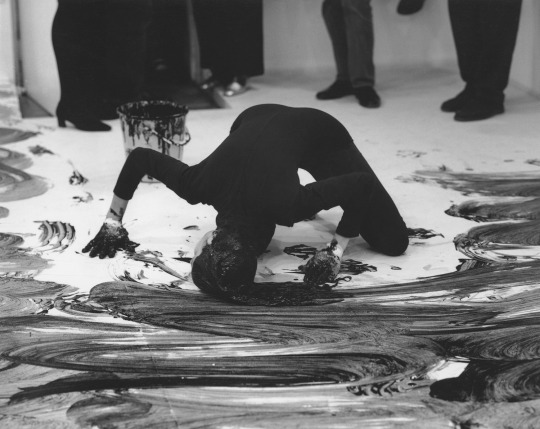
‘Loving Care’ by Janine Antoni, 1993 - performance with hair dye.
Janine Antoni’s work sits in the space between performance and installation. She addresses everyday activities such as eating and bathing and transforms these routines in to art, chiefly using her own body as her method of conveying these ideas.
Antoni has performed pieces where she has scraped away at both lard and chocolate with her teeth, as well as washing away exact replicas of her face made from soap. The piece I am most drawn to is ‘Loving Care’, a performance whereby Antoni mopped the floor with her own hair, soaked in ‘Loving Care’ hair dye. She explains that in doing this she learns and reconnects with her body, finding an understanding with what happens when she puts her body in such an uncompromising space. I am reminded of the body prints by David Hammons and the performative prints that I studied in the Research Practice module. Hammons expressed a sense of cultural identity by using his body as a matrix for printing and mark-making.
Antoni could also be seen to be putting forth a thought-provoking address of antiquated views of femininity in the domestic setting in collusion with action painting. Mopping been seen as a domestic chore and action painting popularised by abstract expressionism which was predominantly populated by men.
This is a great instance of performance drawing, an example of the artist claiming the space as her canvas, and forcing the audience out of the room as she did so. Again, I enjoy the sense of performance art as a means of describing one's identity, this case being an emotional articulation of gender identity.
Franz Erhard Walther

Politisch (Political), no. 36 by Franz Erhard Walther, 1967 - performance.
I came across the work of Franz Erhard Walther during my research of the Fluxus movement. He is a German artist that rose to prominence with his participatory and activated sculptural works.
‘Werksatz’ is a series of roughly fifty wearable sculptures that are activated through audience interaction, and an exploration is made of the demands that they place on the human body. These demands are furthered by the possibility of the relationships that the objects prompt between additional participants. The fabric objects consist of a multitude of openings, fastenings and straps that encourage the user to wear and initiate them, either as a solo performance or as a collective effort.
Walther explains that the motivation behind the wearable sculptures was to understand the negotiation between dormant and active states. This in turn suggests how the materiality of the works might change the body’s behaviour. It is also interesting to note how some of the pieces depended upon the audience’s ability to achieve an awareness of harmony within the structure, making the piece a confrontation as opposed to a simple Happening. I do like this sense of participation from the audience, if it weren't a risk to health and safety this would be something I would have been keen to explore at my end of degree show. Perhaps urging the audience to create their own asemic works in response or alongside my own. This is still food for thought for further study, as restrictions begin to ease.

Körpergewichte (Body Weights), no. 48 by Franz Erhard Walther, 1969 (performed in 2008) - performance.
Nancy Murphy Spicer
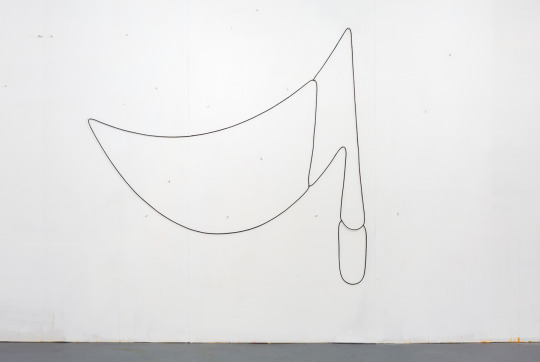
‘Hanging Drawings, 20 successive drawings, unique and unrehearsed’ by Nancy Murphy Spicer, 2015 - installation and performance.
I met Nancy Murphy Spicer as an undergraduate student after she gave a talk to my year group about her drawing practice. I have since read that she created a participatory drawing performance that questions the very nature of drawing. She establishes the line as a sensuous object that can be touched, moved and manipulated. The result is a participatory installation that invites the audience forth to engage with the line and create their own drawing.
It is an interesting conception of the physicality of drawing. The artist has brought forth the tools in which the drawing is to be made, but ultimately it is the spectator that activates its agency as a drawing. This notion not only melds the roles of artist and audience, but also gallery and art studio.
The hanging drawings also touch upon the idea posited by Hiroyuki about the same drawing never being able to be repeated - ‘even if you draw the same letter ten times, ten different forms will arise spontaneously’. This is a thought that I have come back to multiple times throughout this course, the idea of the multiple and the edition. I am a printmaker that is excited by the accidental and incidental unplanned marks, and so the notion of works that can never be repeated is something that I have explored time and time again through print, drawing, writing, and now performance.

‘Hanging Drawings, 20 successive drawings, unique and unrehearsed’ by Nancy Murphy-Spicer, 2015 - installation and performance.
In researching ideas of performance drawing and performance writing, I again find myself being reminded of the Fluxus movement. I would propose that these performances are both Happenings and event scores. I think that this might be an avenue to explore going forward, the capacity for asemic writing to exist both as performance and event score. I do not see Letters of Resignation as a finished piece, but as a starting point to which I could further investigate. Perhaps I could record more written pieces that are less dramatic and focus more on the every day written works. These are just as much performance even without the great expanse and exaggerated writing implements.
#practice#influences#performance#performance art#performance drawing#performance writing#cy twombly#action painting#abstract art#abstract expressionism#fluxus#happenings#event score#score#asemic#asemic art#asemic writing#printmaking#masters#mamdp#processes
12 notes
·
View notes